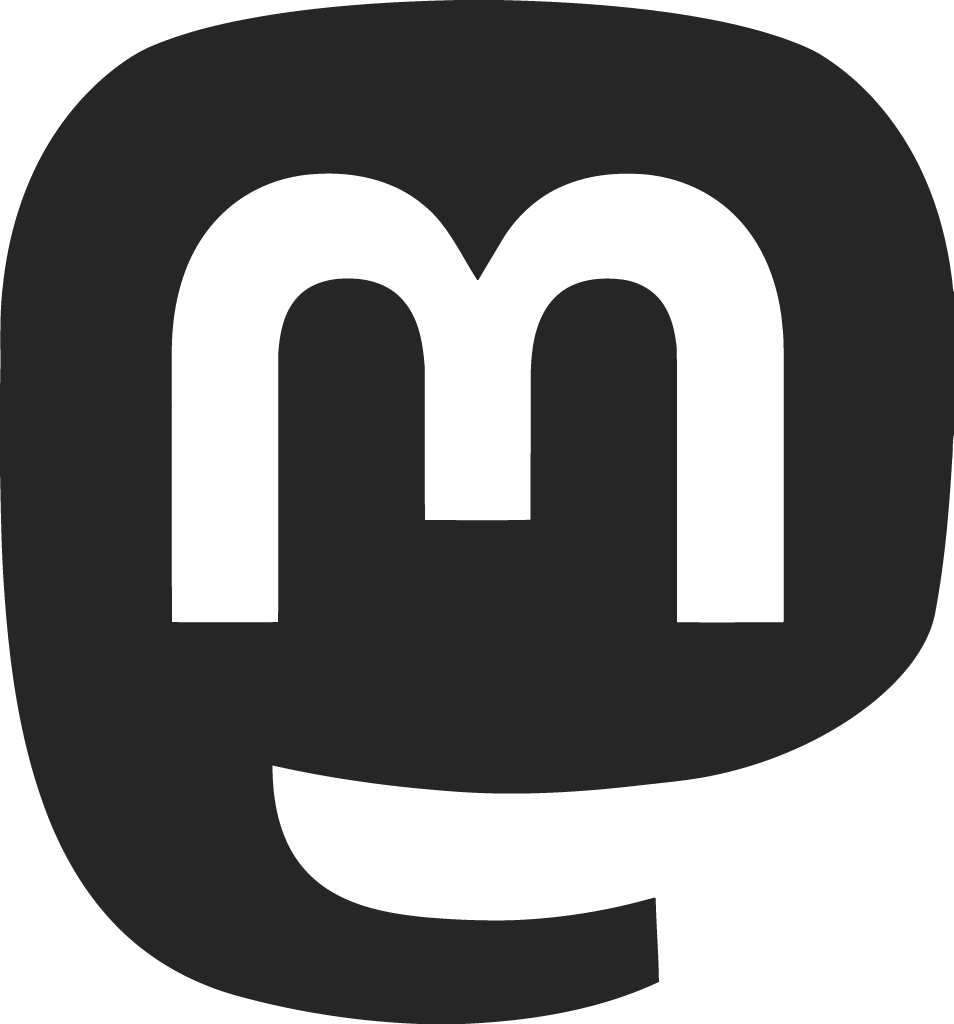Before I arrived at Jurriaan Schrofer’s archive in the Allard Pierson Museum/University of Amsterdam in the spring of 2022, the goal of my research into his constructed scripts was to correct and finish Schrofer’s own attempts to catalog them. He’d done this once for the brochure that accompanied a 1974 exhibit of his designs at the (now defunct) Museum Fodor in Amsterdam, and again in his 1987 book Letters op maat (Letters made to measure). In both cases, his list was incomplete, and I’d hoped to create a true catalog raisonné of his designs.
Once I began to look through the 270 boxes of material in his archive, though, I realized that such a catalog—at least as it’s conventionally understood—would be practically impossible to complete. There are simply too many partially-completed designs, sketches, variations, and alternative directions, scattered too widely among his papers. It would take a team of researchers—armed with a finely-grained index of his archives—years to complete the work.
But as I worked through the materials, I realized that there were definite centers of formal and conceptual gravity among the designs. Any given script could be imagined as a permutation of the design space, repertoire of forms, and construction rules informed by one (sometimes more than one) of these centers. And it’s possible to sort and describe these centers, and their associated scripts, in ways that suggest permutations of those spaces, repertoires, and rules that Schrofer never explored himself. The result would be something like a ‘speculative catalog raisonné’ that would make it possible to capture the breadth and potential of Schrofer’s designs without the literal comprehensiveness of a conventional catalog raisonné.
I’ve identified eleven centers to Schrofer’s designs; in subsequent posts I’ll share them one at a time, with accounts of their parameters and more examples. All images below are either taken by me, and shared courtesy of the Jurriaan Schrofer Archive, Allard Pierson, University of Amsterdam; or from the Dutch National Archive of Graphic Designers (NAGO) public database (Collectie Nederlands Archief Grafisch Ontwerpers).
Center 1:



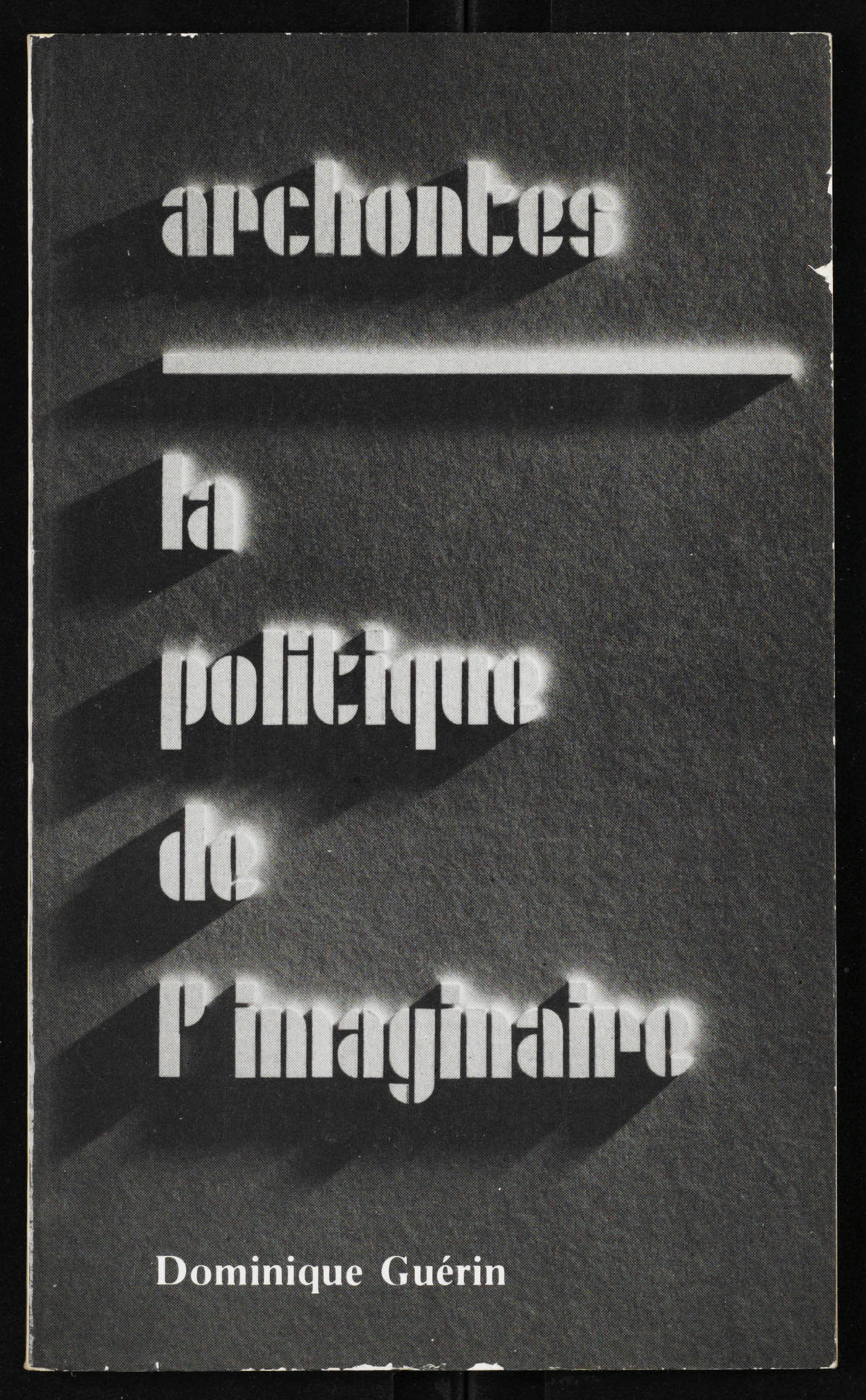
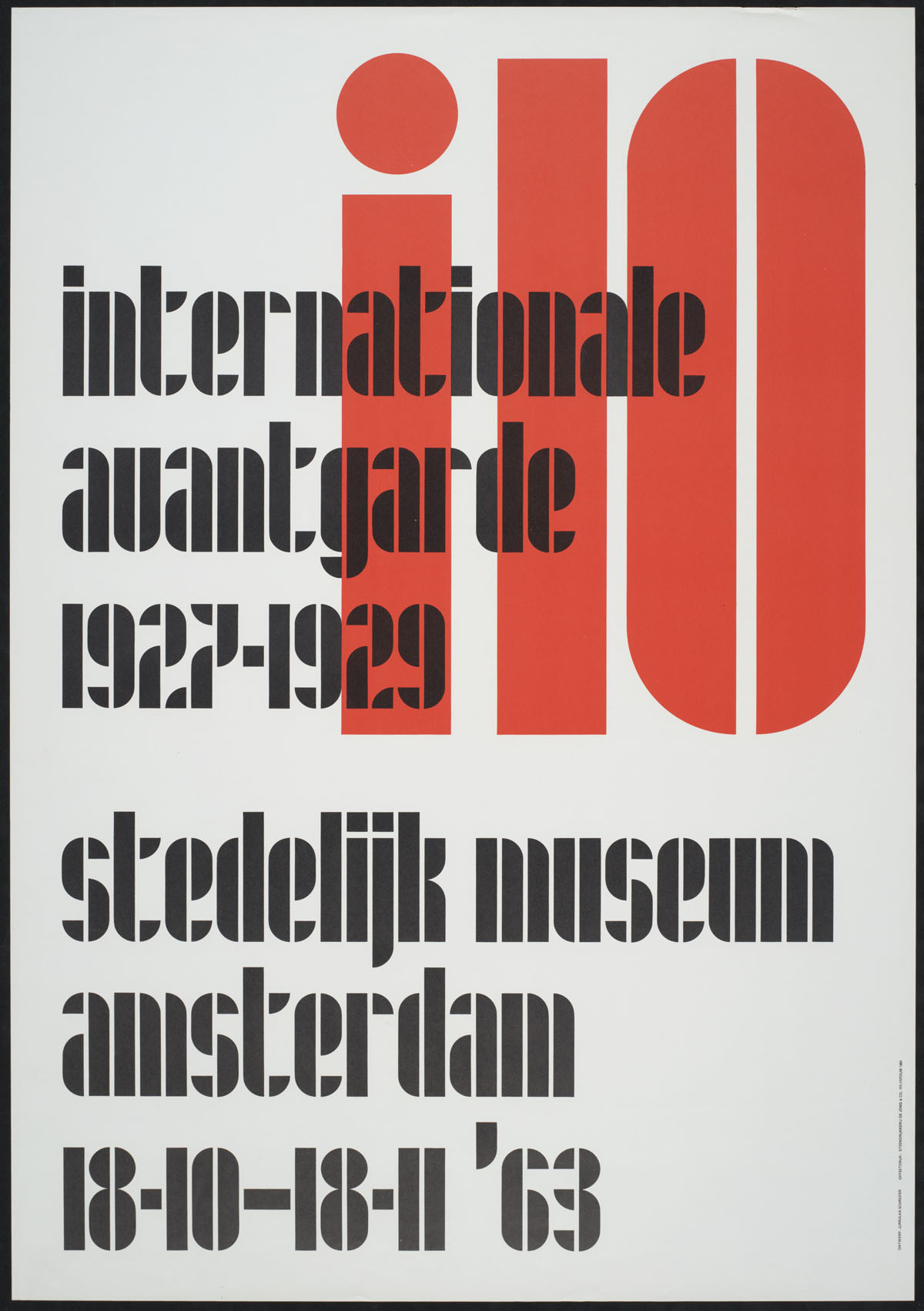
Center 2:
Center 3:
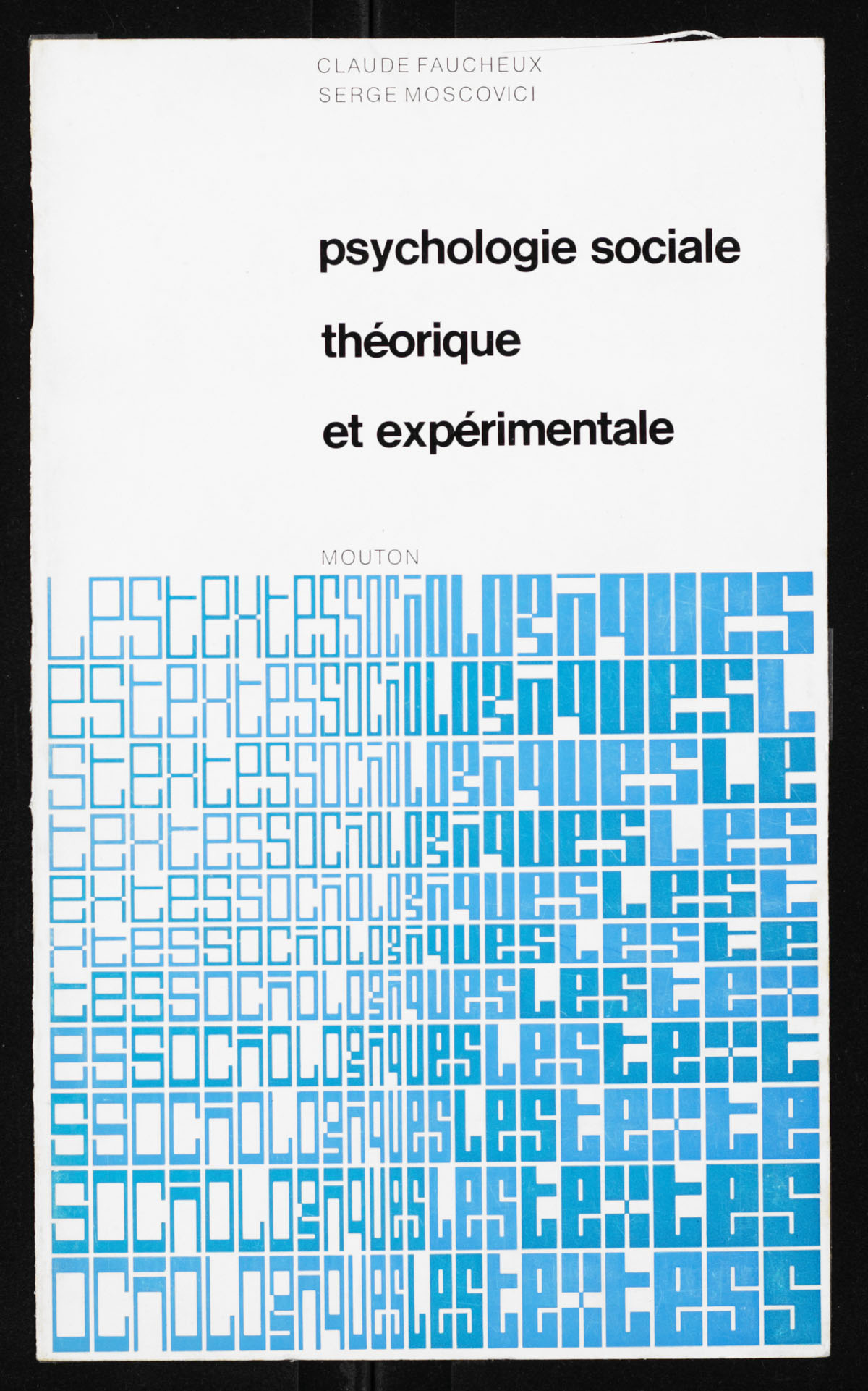
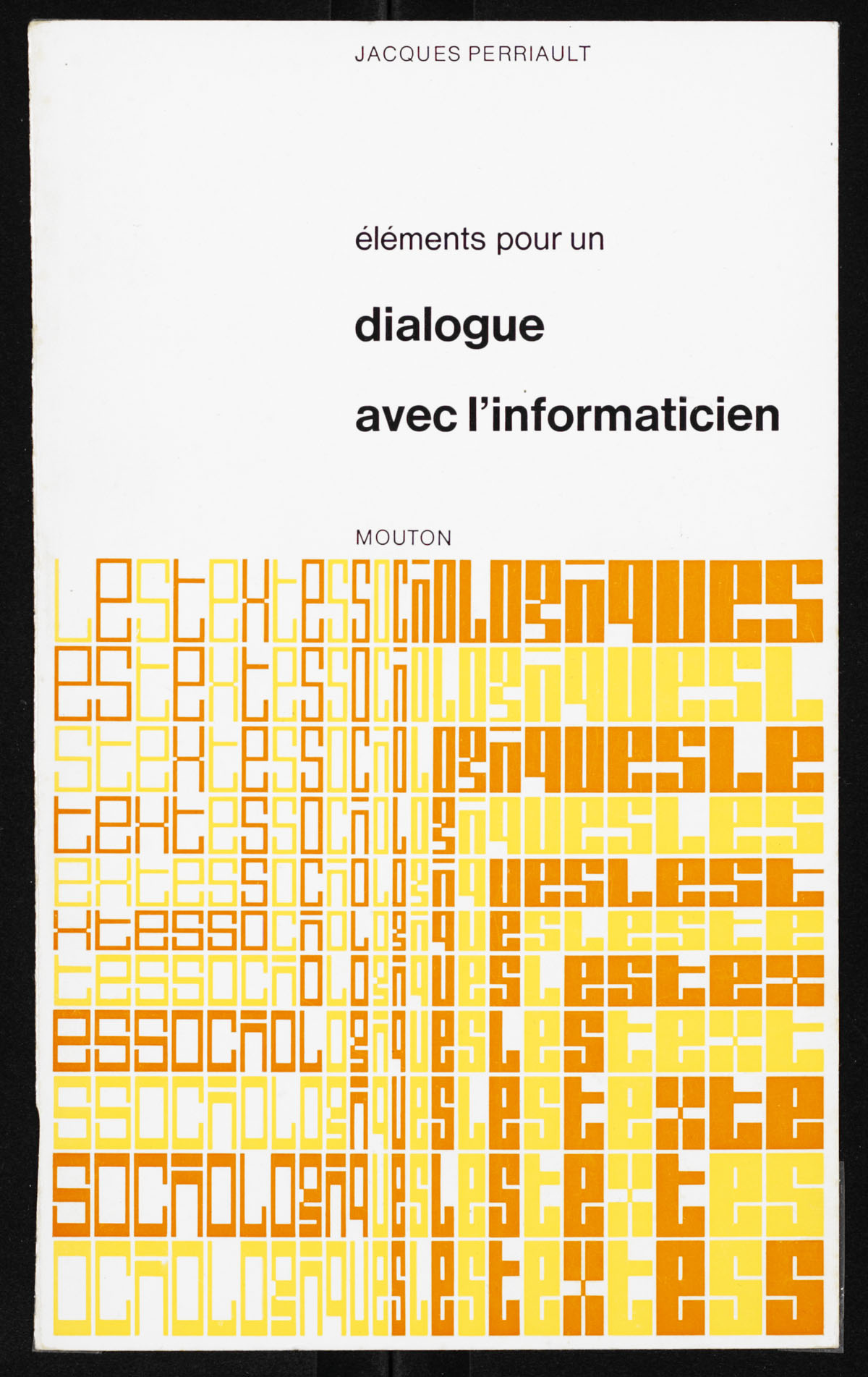

Center 4:


Center 5:
Center 6:
Center 7:

Center 8:
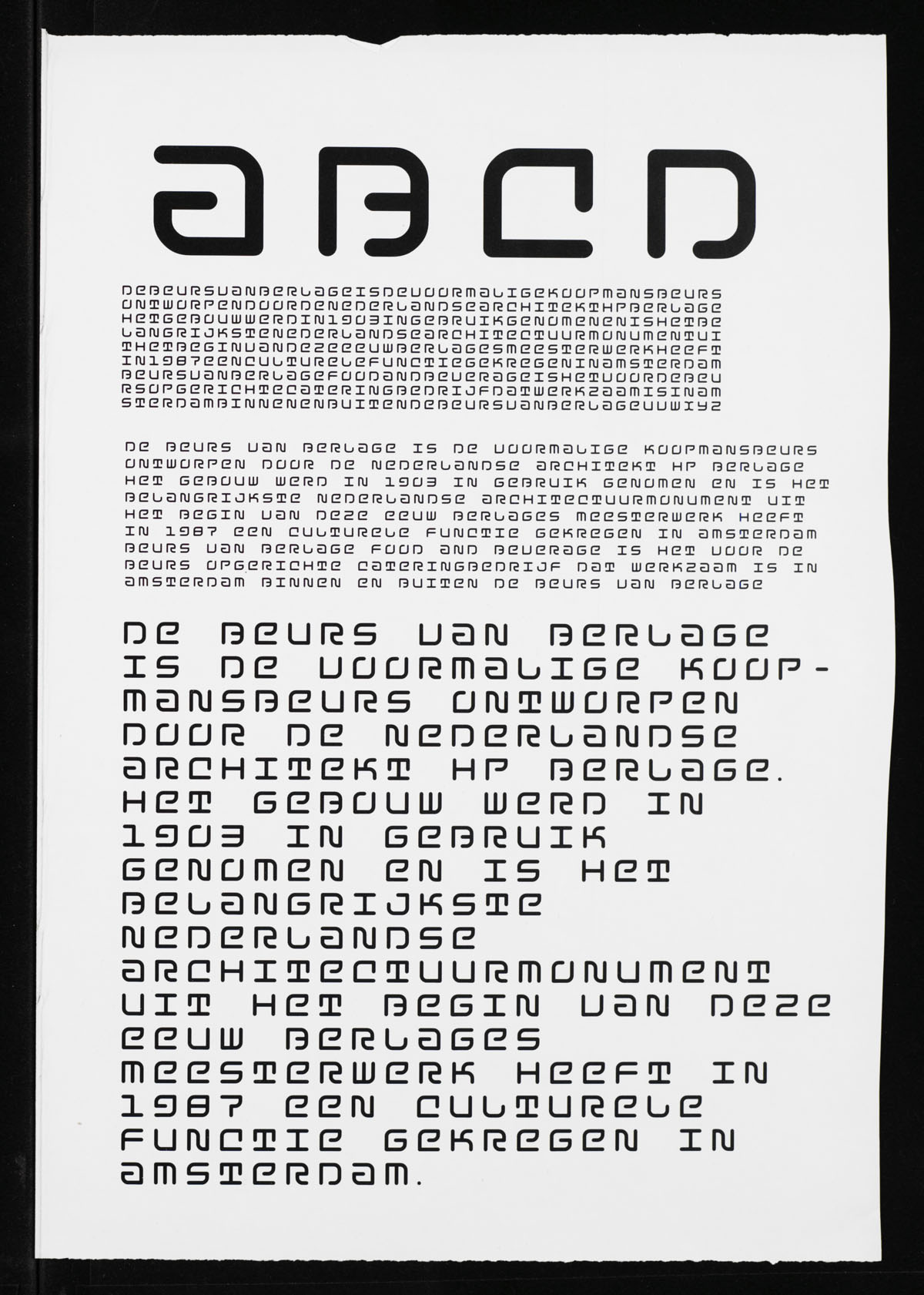

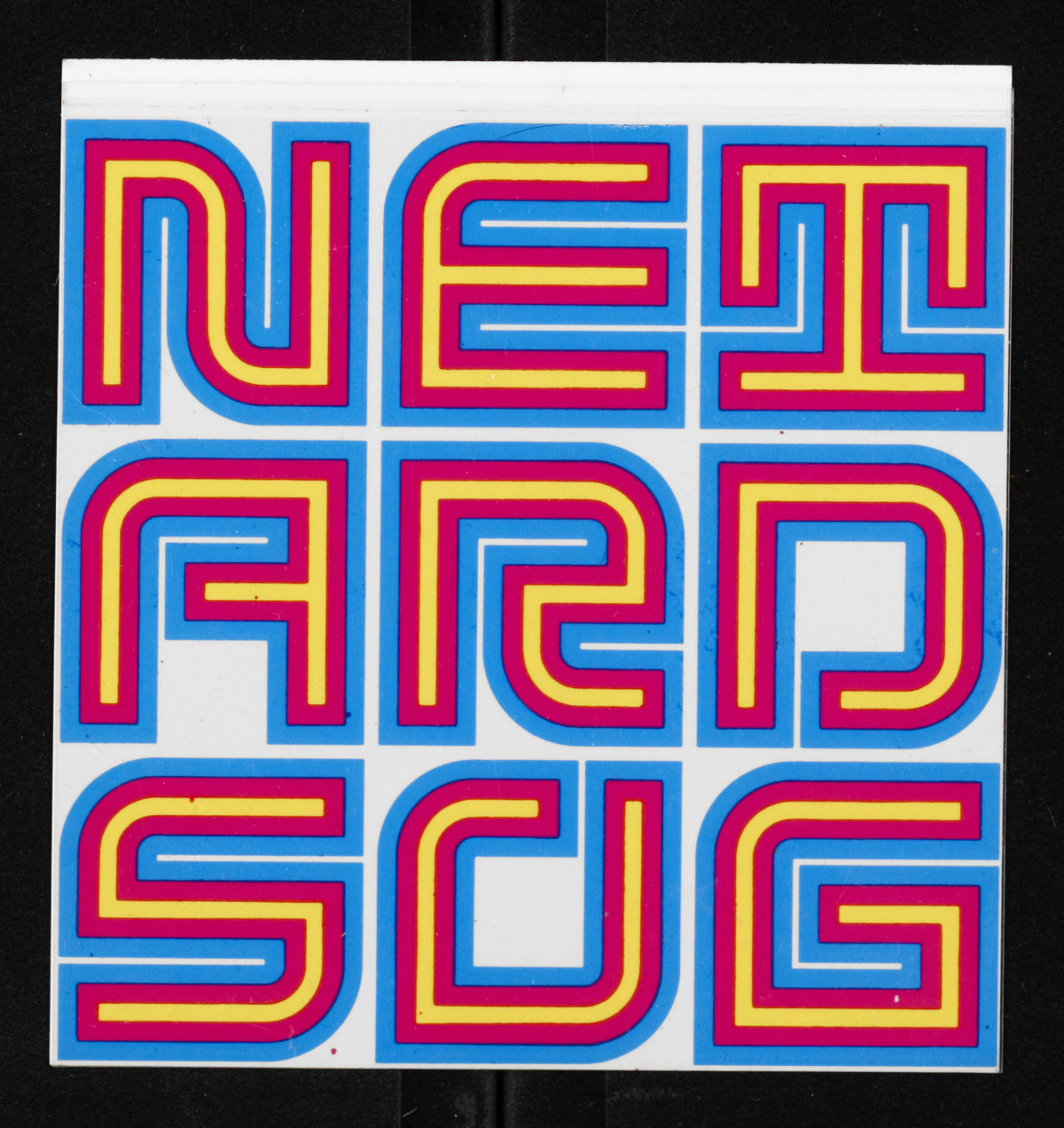
Center 9:

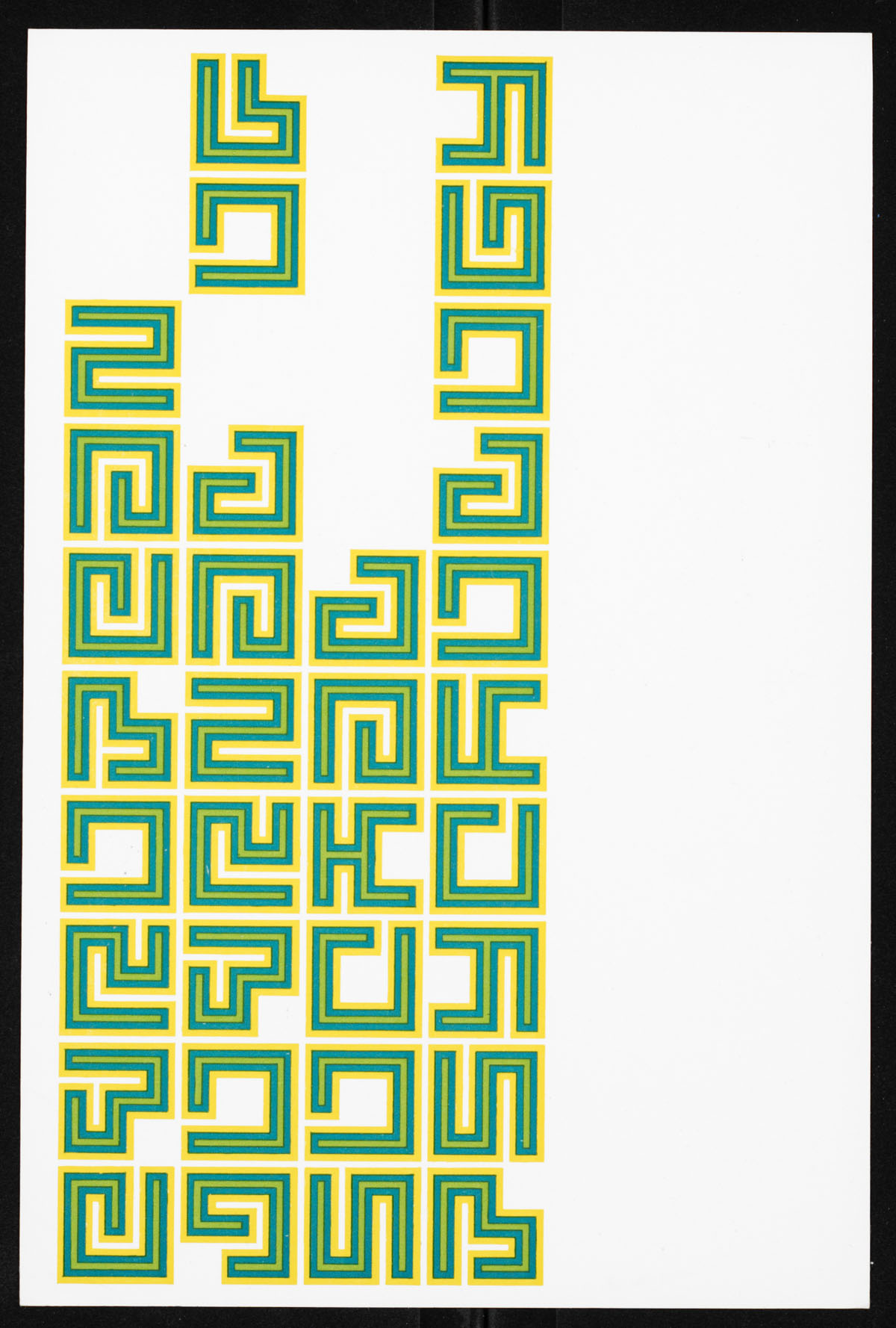

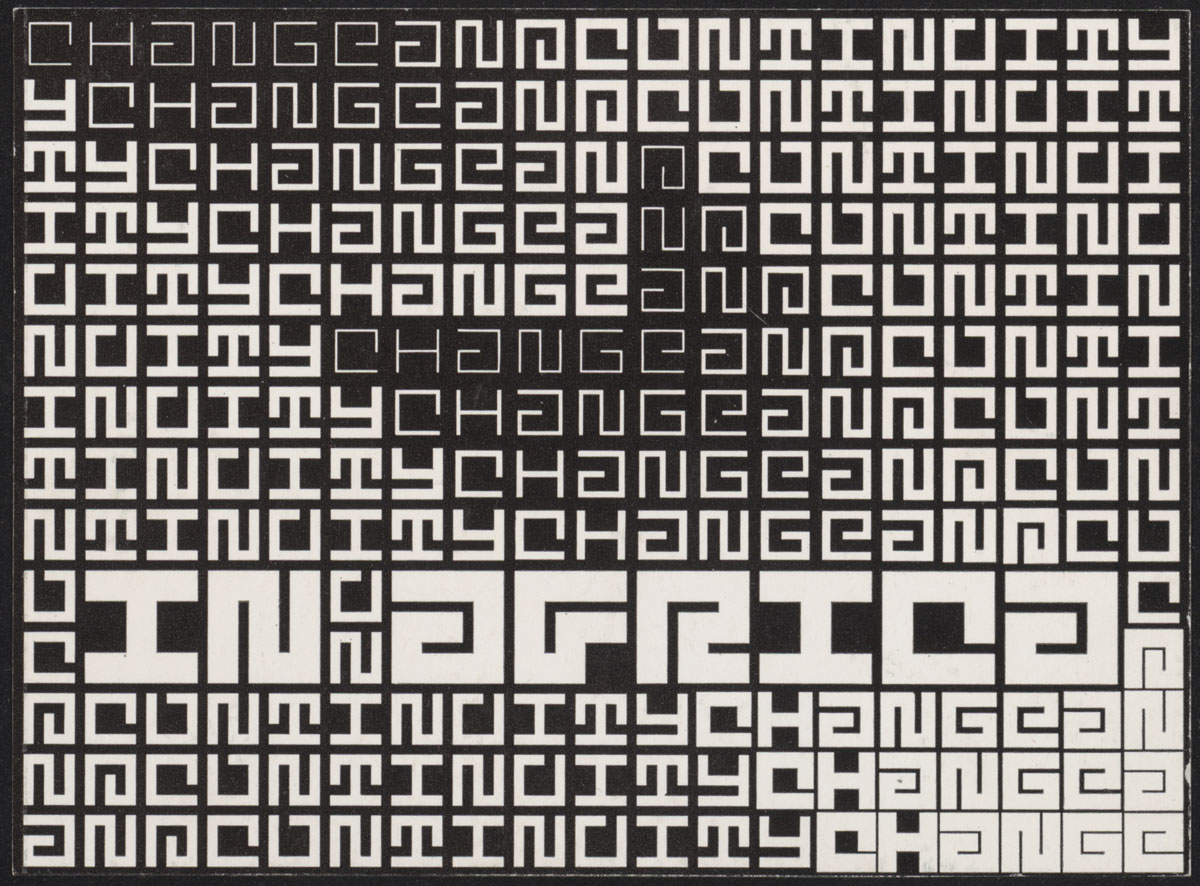
Center 10:
Center 11:
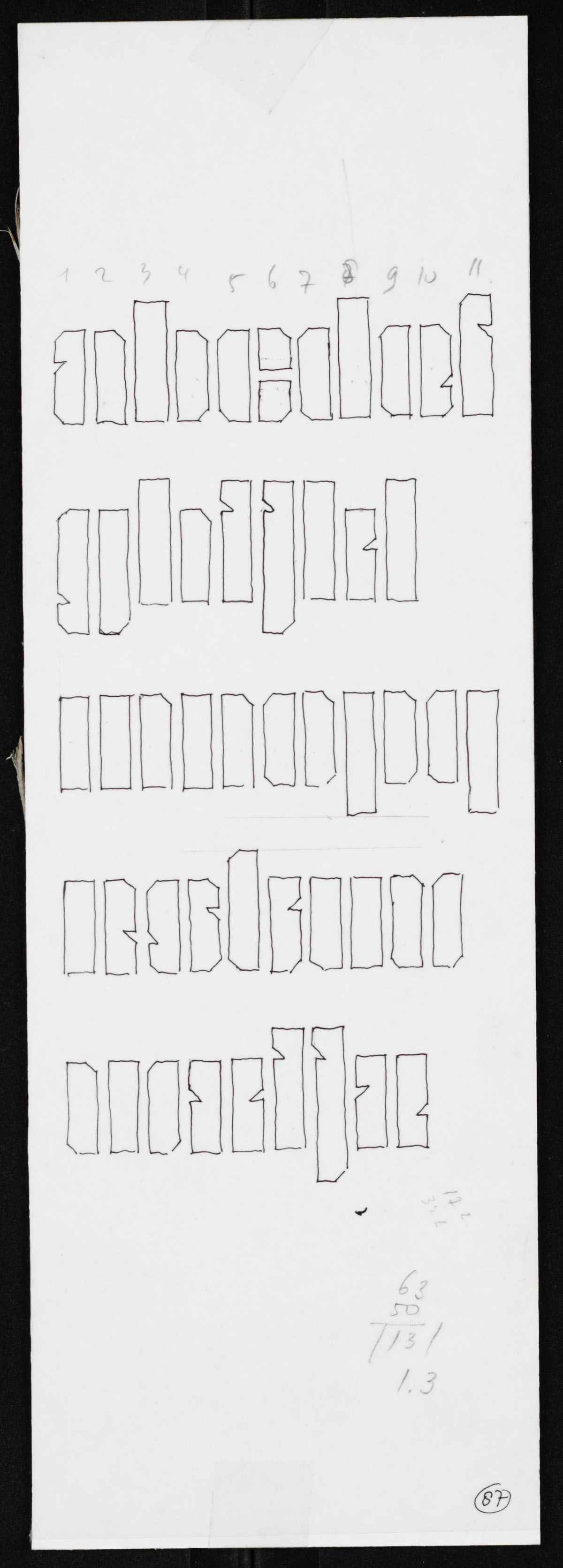
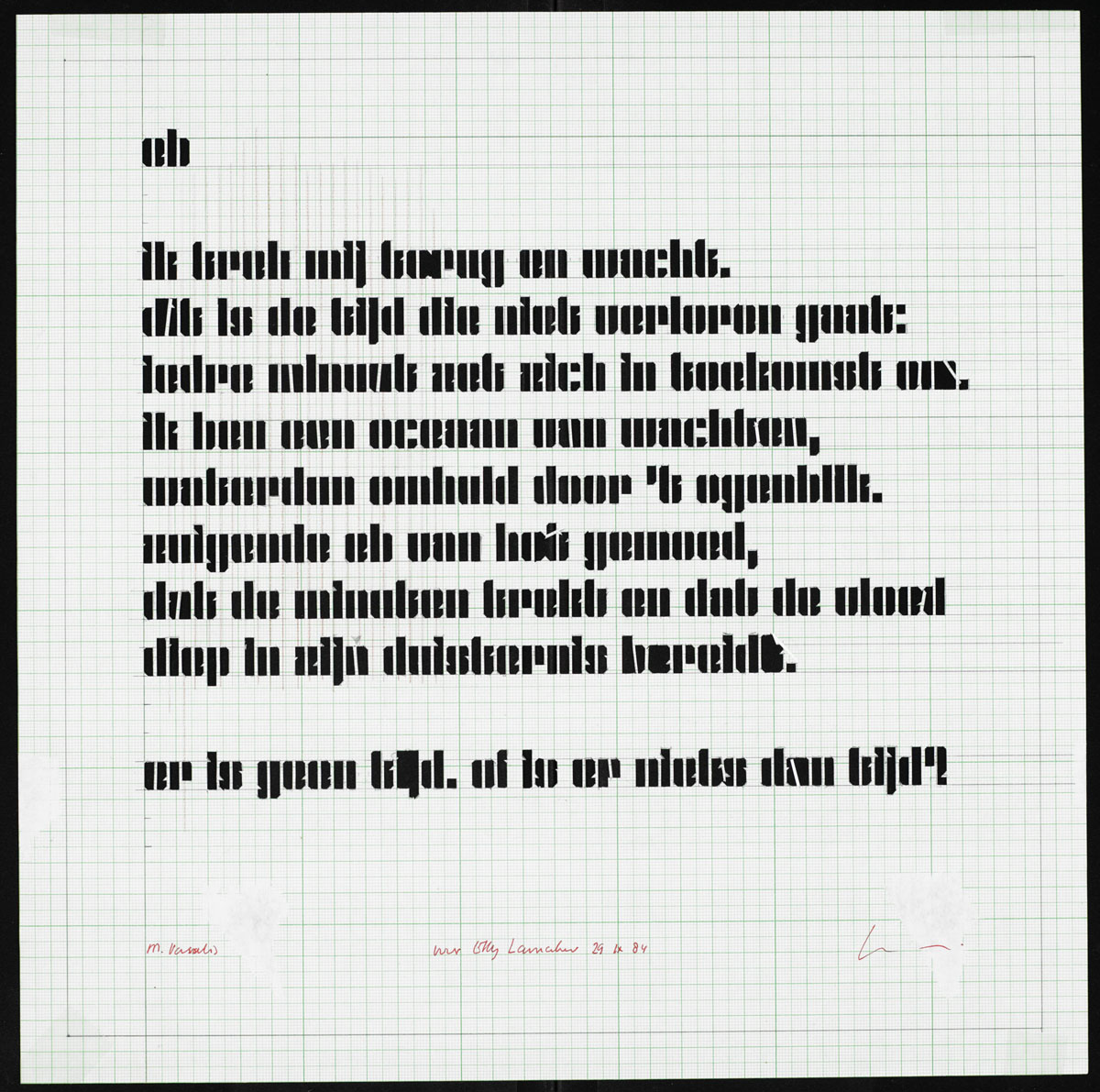
It’s been said by a number of people, among them his biographer Frederike Huygen, that Jurriaan Schrofer was a computer designer in all but name. True as that is, he also made smart compromises with his analog materials.
In 1968, the Dutch PTT (Posterijen, Telegrafie en Telefonie; the Dutch post office) commissioned Schrofer to design a stamp to celebrate the 50th anniversary of the the International Labor Organization—in Dutch, Internationale Arbeidsorganisatie (IAO)—in 25c and 45c (gulden) denominations.
Schrofer drafted two options for the stamps; one was based on a photographic image, with lettering based on a design Schrofer had been using since the early 1960s.
 (Jurriaan Schrofer Archive, Allard Pierson, University of Amsterdam)
(Jurriaan Schrofer Archive, Allard Pierson, University of Amsterdam)The direction the PTT chose, Schrofer’s own favored option, used a field of small letters in different weights as image elements—pixels, though Schrofer wouldn’t have used that term—to create a text of larger rasterized letters.

 (Jurriaan Schrofer Archive, Allard Pierson, University of Amsterdam)
(Jurriaan Schrofer Archive, Allard Pierson, University of Amsterdam)The larger letters for ‘IAO Nederland 25/45c’ are fairly simple block letters.
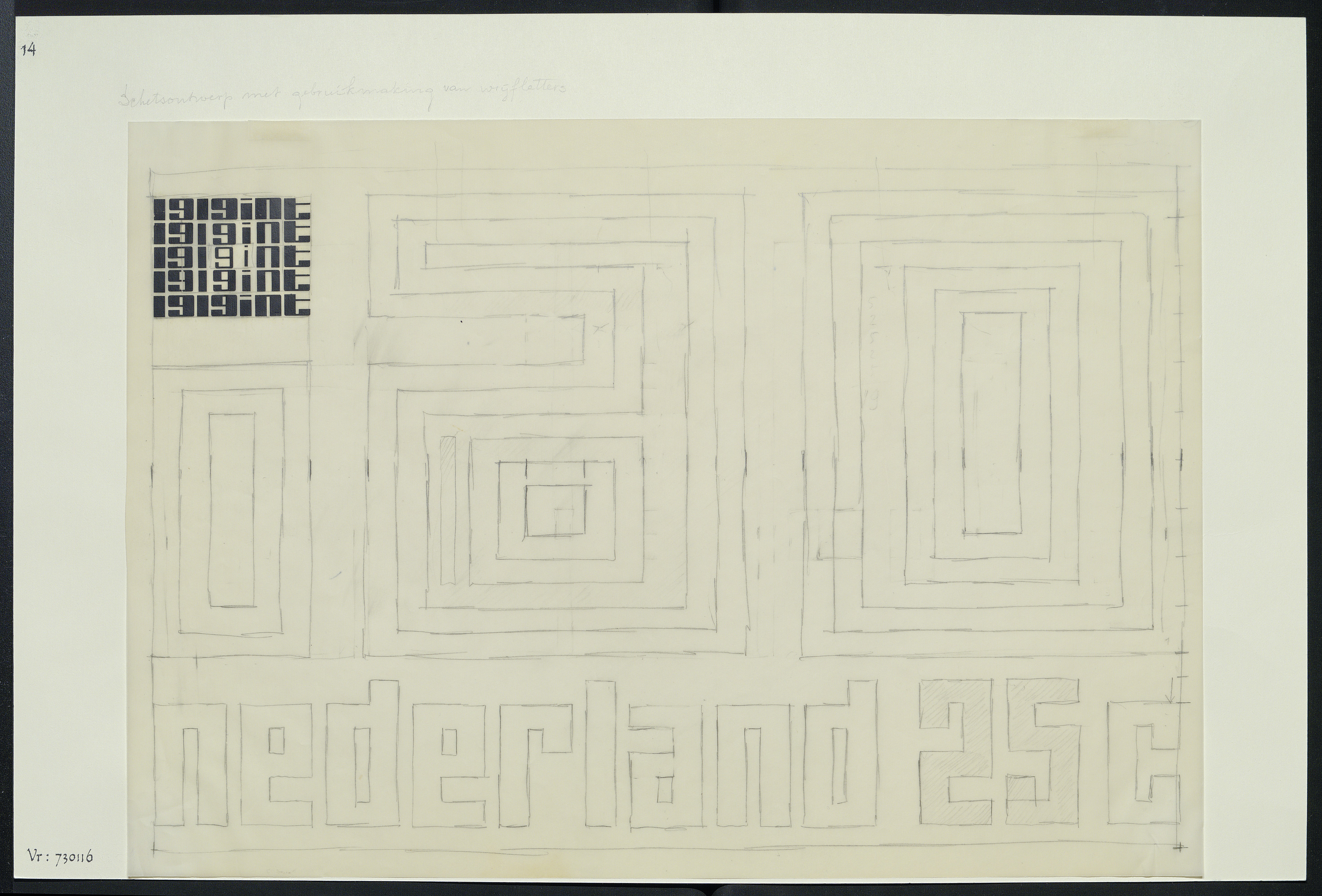
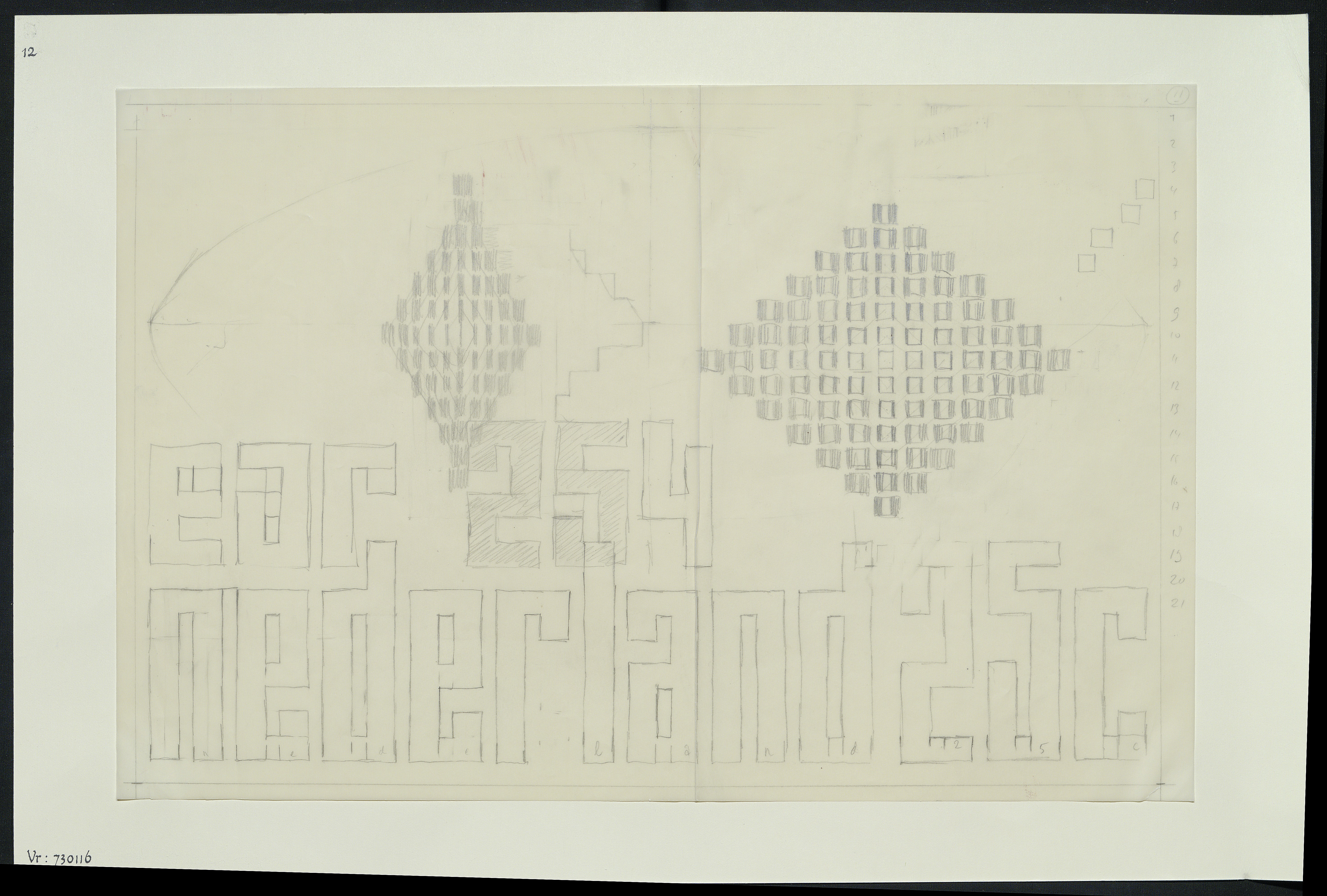
(Nationaal Archief Nederlands)
The smaller element letters are variants on a script design that Schrofer had been using since the early 1960s.
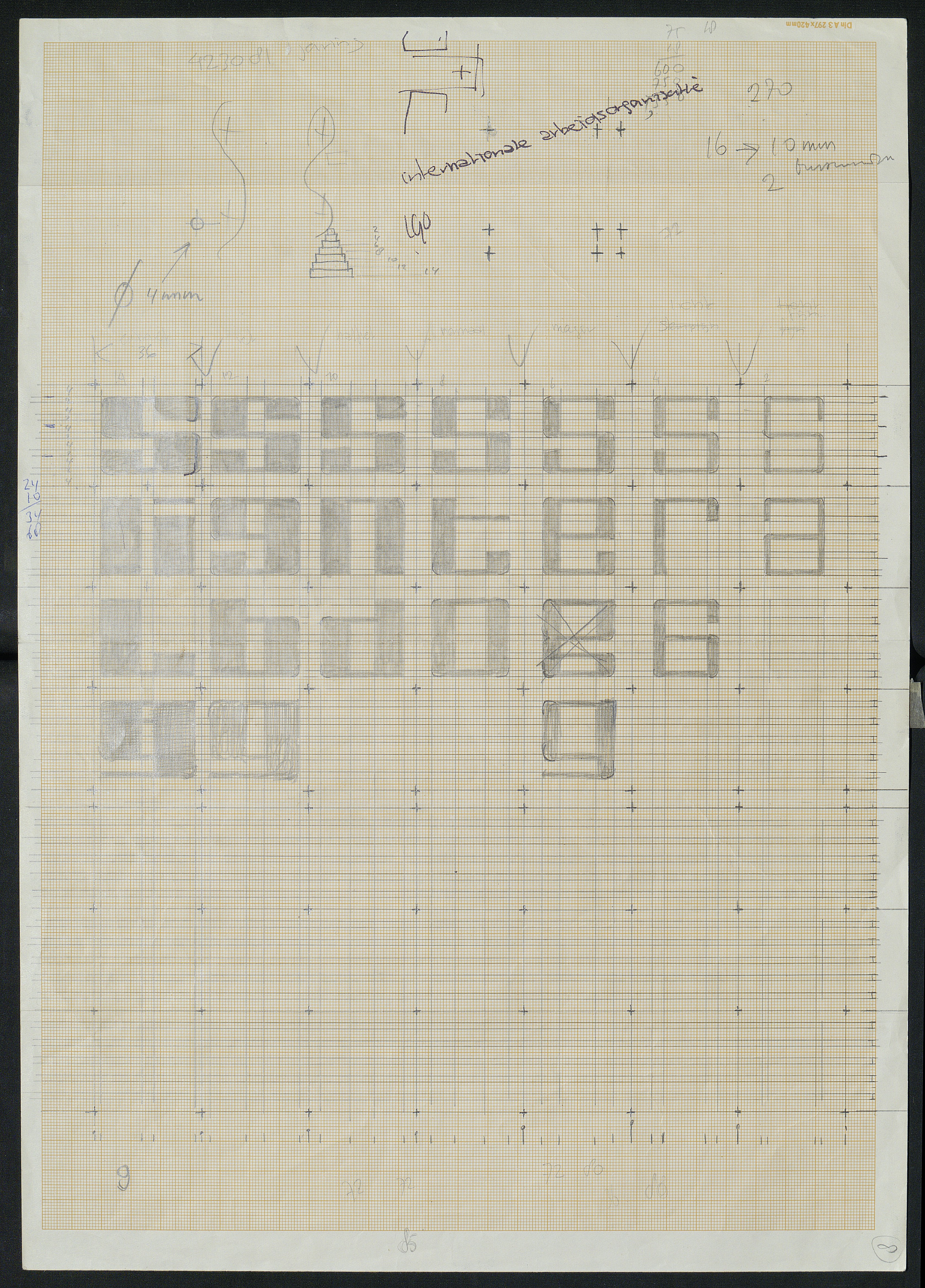
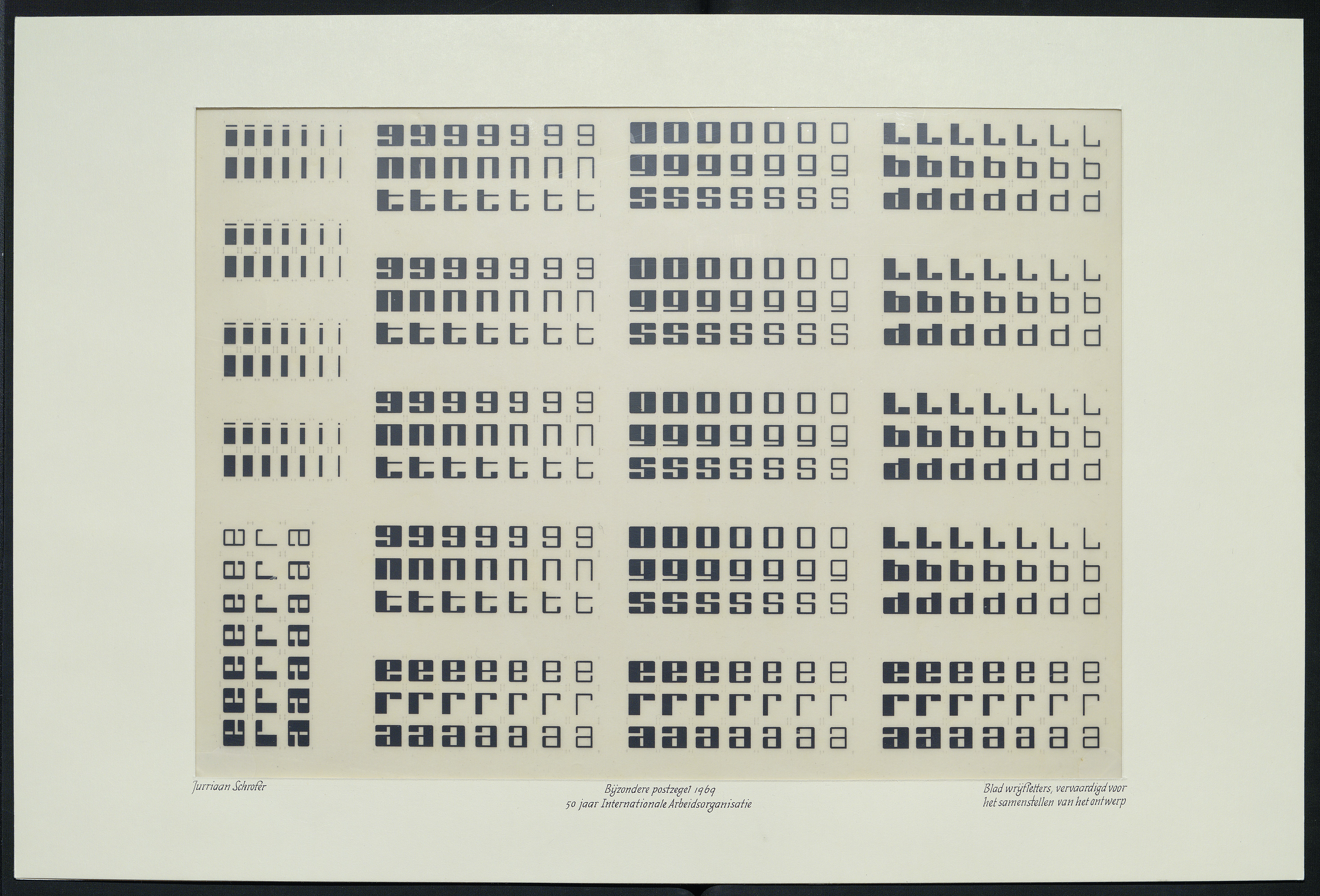
(Nationaal Archief Nederlands)
Schrofer’s initial plan was to vary both the horizontal and vertical strokes of the element letters. But finally he chose to only vary the vertical strokes—simplifying the design in some ways, making it more complex in others.
(Jurriaan Schrofer Archive, Allard Pierson, University of Amsterdam)

(Nationaal Archief Nederlands)
The 71 vertical strokes in the text ‘1919 Internationale Arbeidsorganisatie 1969’ defined the number of width units in the element letter grid. The two sizes of rasterized letters would have 11- and 2-unit vertical strokes, and 4- and 1-unit vertical counters.
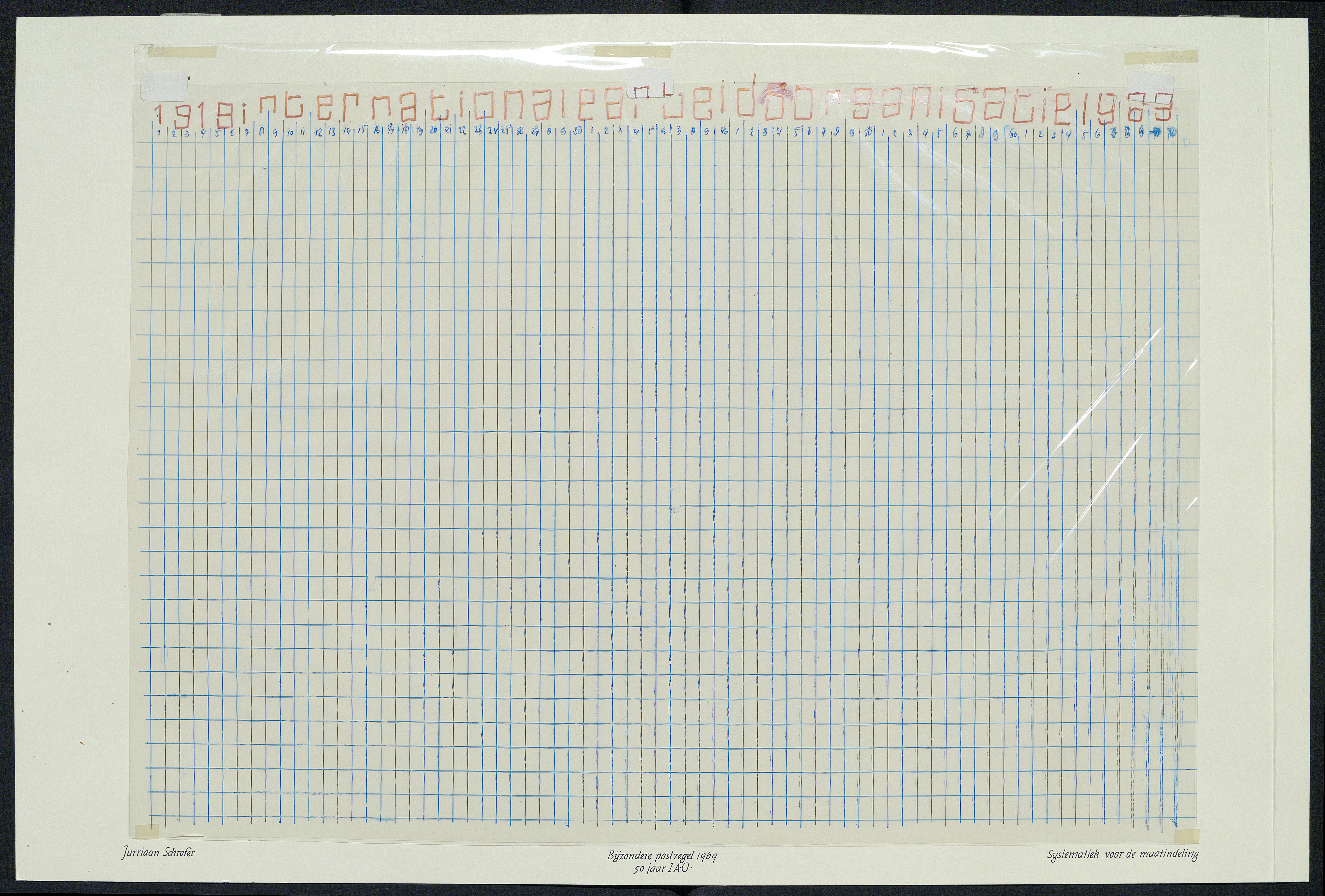
(Nationaal Archief Nederlands)
Schrofer chose 3- and 1-unit horizontal strokes, and 5- and 1-unit horizontal counters, for the two sizes of letters. Leaving two units of space between the lines, and one unit above and below the text, gave the number of height units of the element letter grid: 28.
In these images Schrofer is experimenting with a couple different methods of varying the width of the vertical strokes of the element letters.
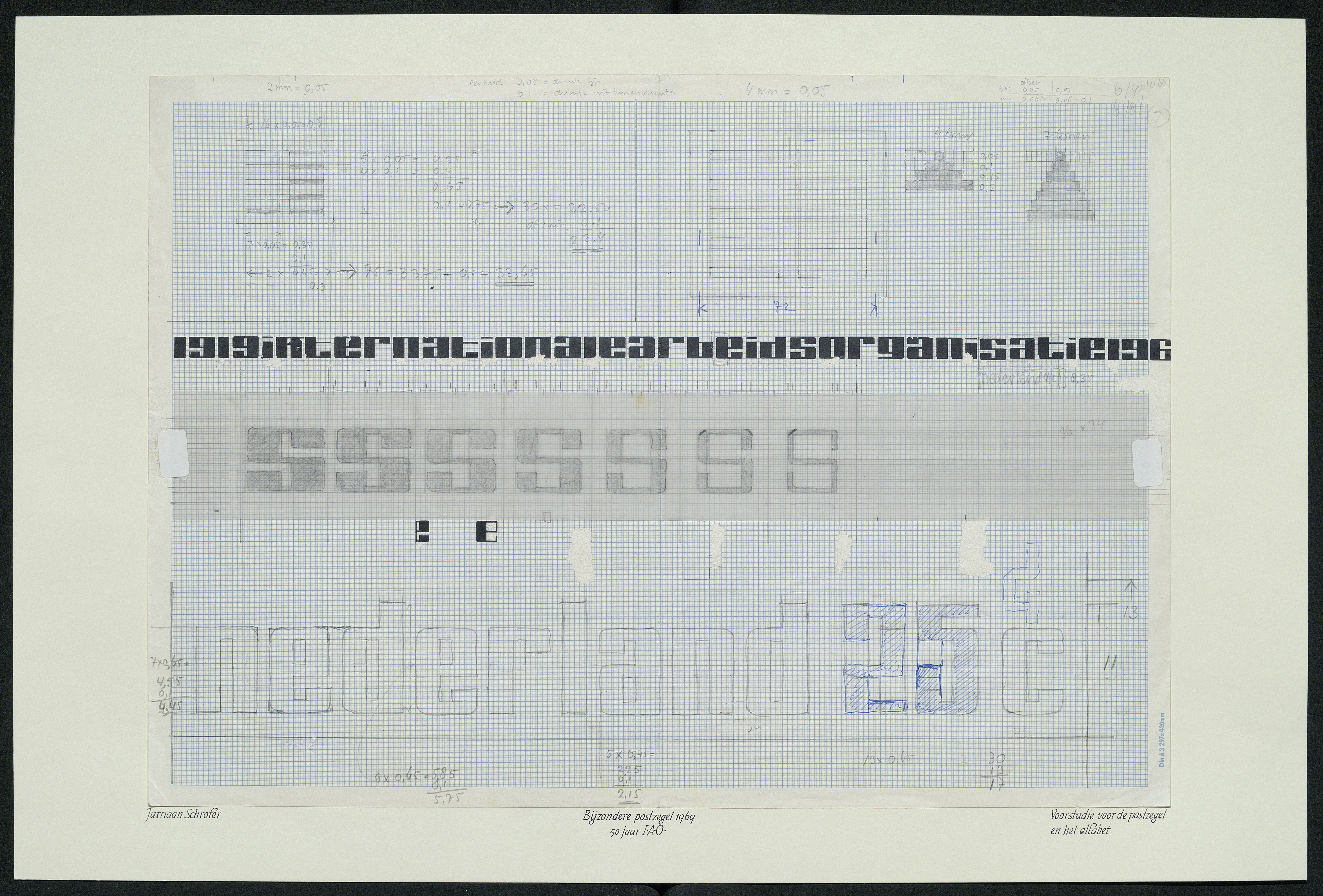
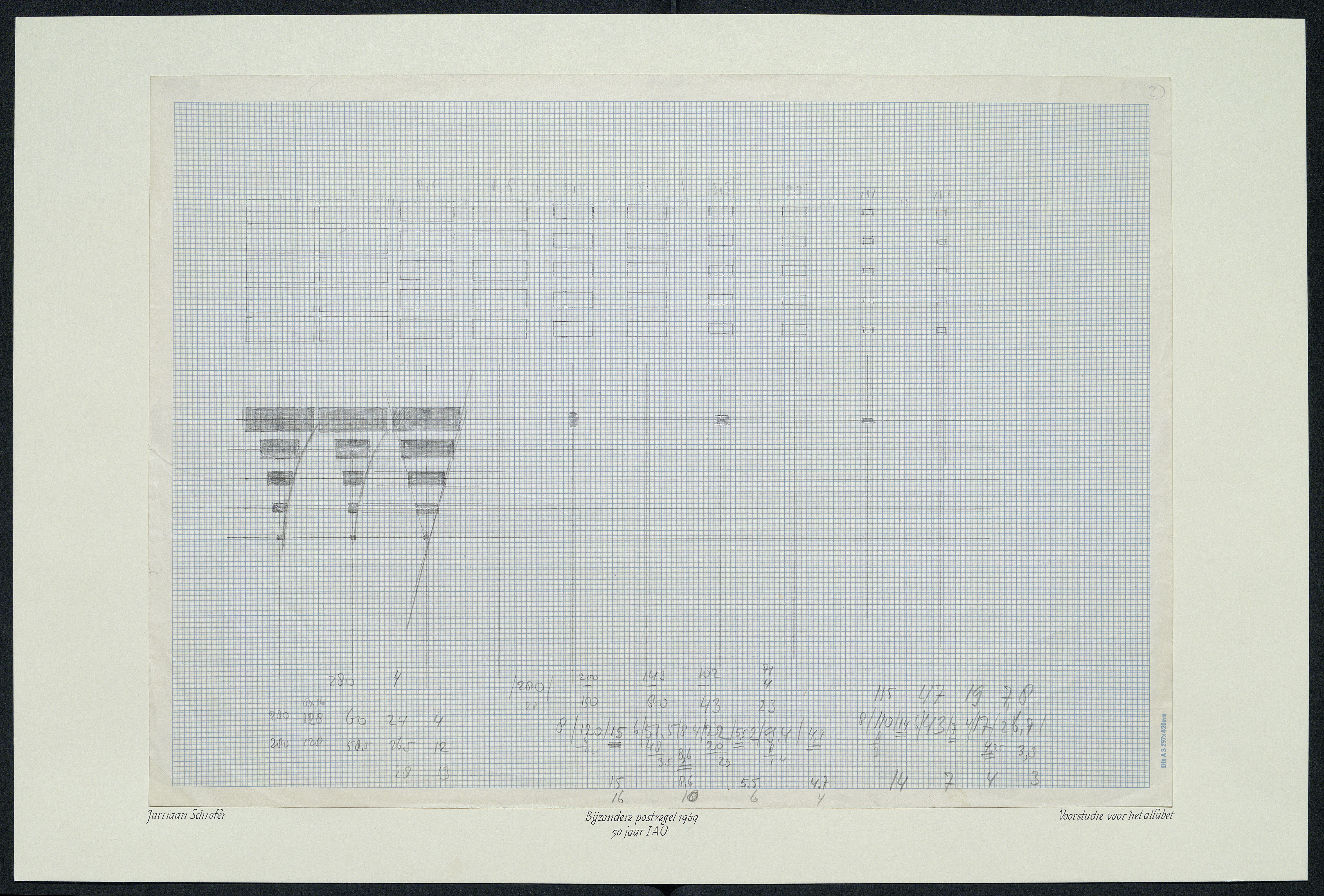
(Nationaal Archief Nederlands)
The method he chose was based on a series of whole-number vertical/horizontal stroke ratios: 1:1, 2:1, 3:1 … 7:1. Also, since the columns of the element letter grid were based on the letters’ vertical strokes, centered on constant heartlines. He drew the glyphs in a constant horizontal space sized to ensure that the sidebearings of the glyphs were always half the vertical counterspaces, at all weights.

(Nationaal Archief Nederlands)

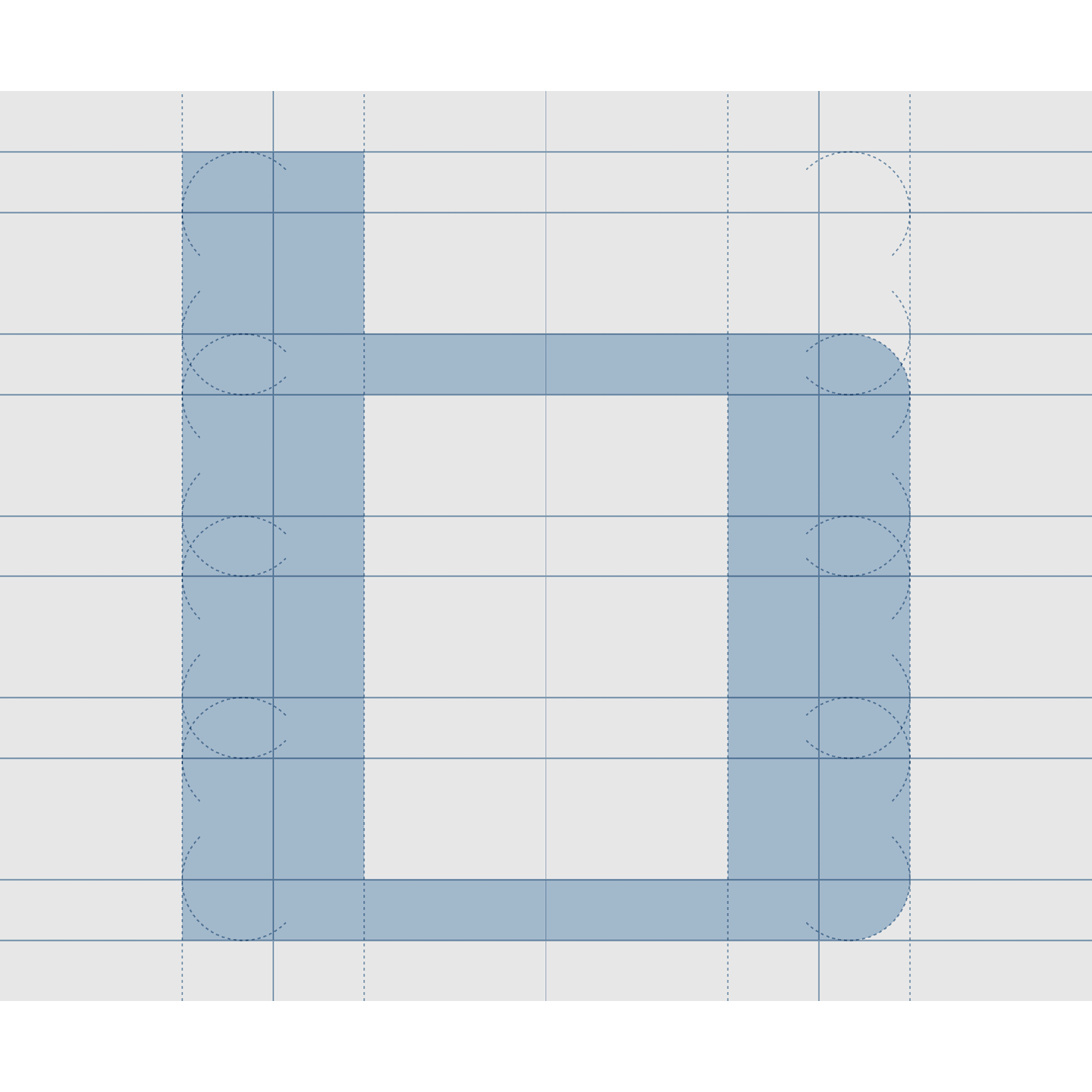


Single-vertical-stroke glyphs would simply occupy one instead of two cells horizontally, but function seamlessly with the two-stroke glyphs.
The simplest method of using weight for contrast to make the larger letters would have been a binary thick/thin treatment. But Schrofer wanted to use his weights to make more complex larger letters, as we can see in these sketches.

(Jurriaan Schrofer Archive, Allard Pierson, University of Amsterdam)
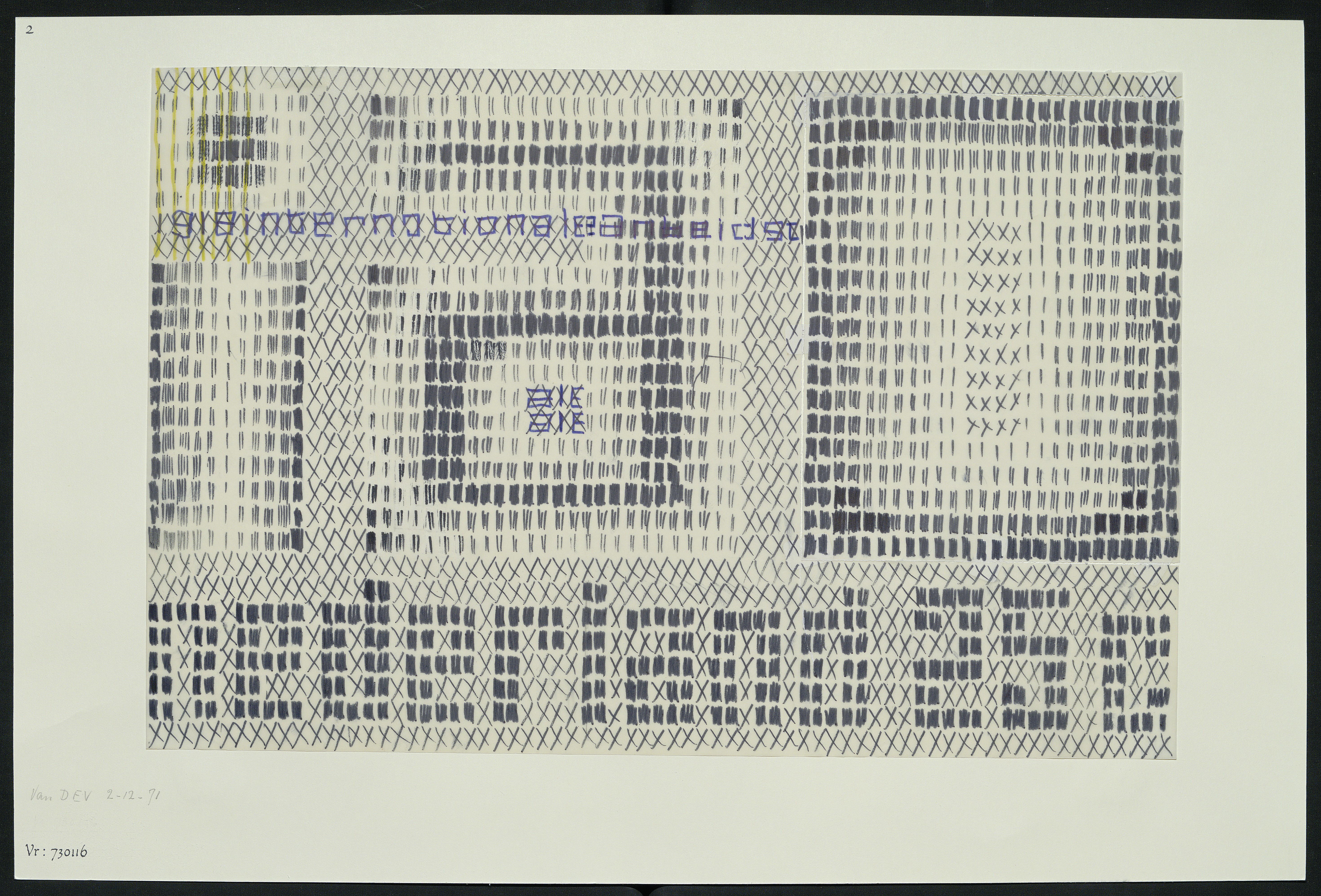
(Nationaal Archief Nederlands)
Schrofer ultimately chose a diagonally-offset weight modulation for the larger letters, oscillating from the heaviest vertical:horizontal stroke ratio, 7:1, to the third-lightest, 3:1. Here again, the 25c stamp, where the wave-like pattern is clear.

(Jurriaan Schrofer Archive, Allard Pierson, University of Amsterdam)
With the lightest 1:1 weight for the background letters, omitting the second-lightest weight would maintain contrast between figure and ground for the larger letters, no matter at what point any given cell defining those letters was in the cycle.
In the rectangular grid Schrofer had set up, a strict plan for diagonally-offsetting the weight modulation would look something like this: starting with the heaviest weight in the leftmost column at the first row containing the larger letters: 7-6-5-4-3-4-5-6 …



But that’s not the plan Schrofer used—understandably, if you think about it. Schrofer used custom dry-transfer lettering to make his mechanicals. He had to cut his two-stroke element letters in half vertically to create weight contrasts between one cell and the next. You can see the cuts up close.

For the stricter plan of modulation, he’d have had to cut nearly all of the element letters making up the larger letters in half—only the single-vertical-stroke letters and the two-stroke letters in the background wouldn’t need this editing. With 1349 cells in the area of the field where the larger letters are, that’s a lot of careful cutting—and evidence from his papers suggests that he didn’t have assistants he could hand the work off to. (For reference: Schrofer drew the letters on 1mm graph paper, in design spaces 36mm × 34mm, and had the drawings photographically reduced to 1/3 scale, or 8.67mm high, to produce the rubdown lettering.)
So Schrofer chose to keep the weight constant in any given glyph, except when transitioning from large-letter figure to ground or vice-versa. He could have done this while shifting to the weight the strict plan would have indicated with every new glyph. That would have looked like this: again in row 2, 7-6-6-4-3-3-5-6-6-6-6-1-1 …

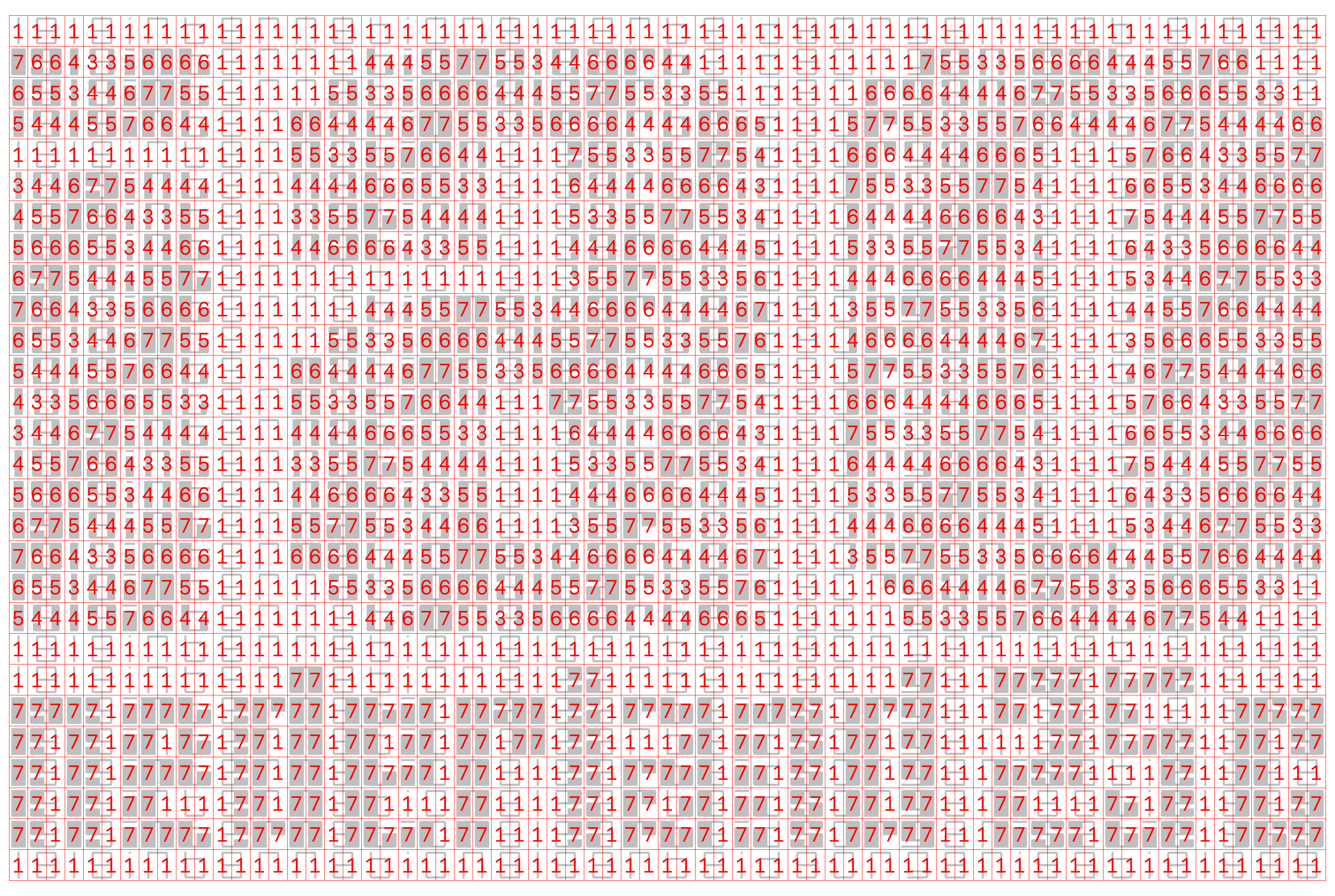

But as you can see even at the start of that second row, this would have interfered with the appearance of the weight shifts, freezing the modulation in places and somewhat reducing/complicating the overall effect. The interference is subtle, but it’s there.
So Schrofer decided to ignore the strict approach, and modulate weight in the rows by glyph. That looks like this: yet again in row 2, 7-6-6-5-4-4-3-4-4-5-5-1-1, effectively turning the diagonal of the wave clockwise.



Assuming that Schrofer adjusted the weight modulation plan at least in part to reduce the amount of work he had to do, here’s something curious. Look again at Schrofer’s drawings for the glyphs and the produced rubdown letters.

(Nationaal Archief Nederlands)
(Jurriaan Schrofer Archive, Allard Pierson, University of Amsterdam)
In Schrofer’s drawings and on the sheet of dry-transfer letters, the L/l has the form of a majuscule Latin alphabet L and the width of two vertical strokes. But if you look carefully, you’ll notice that unlike other glyphs with an implied curved stroke, like the bottom of the T/t and the 9 or the arm of the R/r, the corners of the bottom of the L/l are unrounded. Also, the ‘outstroke’ of the T/t and the shoulder of the R/r extend only about one-quarter of the height of the letter.
Now look at those same glyphs in the mechanical:
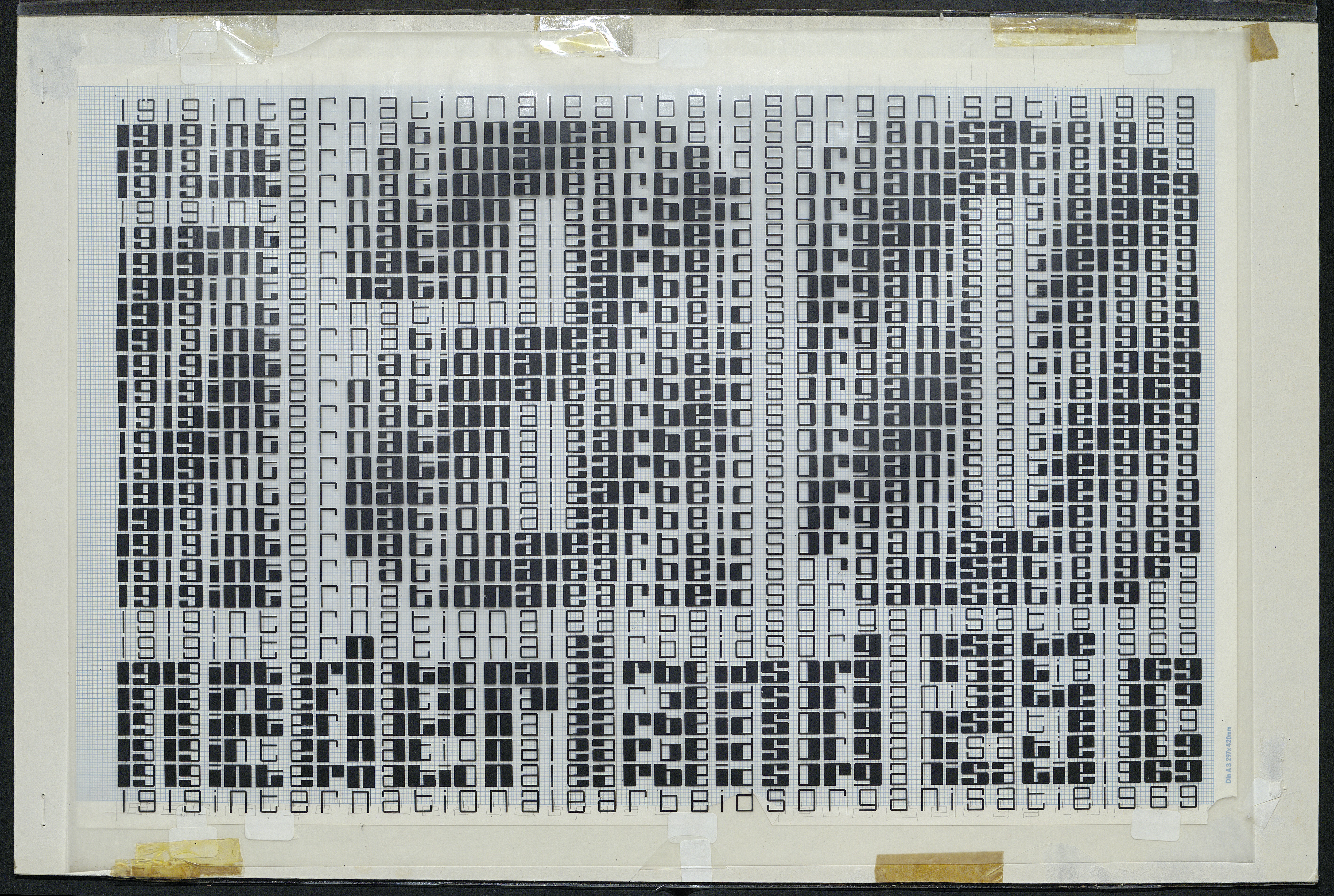
(Nationaal Archief Nederlands)
Here the L/l is a single vertical stroke, identical to the 1. Indeed it would have to be, in order for the full line of background text to fit in 71 cells at one vertical stroke per cell.
Also, the heavier weights of the T/t and R/r have extended strokes. Manually extended; you can see the seams where Schrofer overlaid pieces of lettering to create them.

And not perfectly consistently; there are mistakes that made their way onto the stamps. Notice the third and fourth T/ts from the top of the column:

Schrofer’s goal was apparently to make the background element letters as light as possible, and the element letters for the larger letters as heavy as possible, to reinforce the weight contrast between them.
At first I wondered if the extra L/l glyphs were there for material to add to the T/t and the R/r. But if Schrofer knew in advance he’d need those longer strokes, it’d have been much more efficient to design all but their lightest weights with longer outstrokes. I think he discovered while making the mechanical that he needed the longer strokes for the heavier weights of the T/t and R/r. It was fortunate he had the material to make them, but even if this is what happened, the question of why he had the two-stroke L/l made in the first place remains unanswered.
Here’s another curious thing: Consider that the designs for the 25c and the 45c stamp are identical, except for the 2/4.
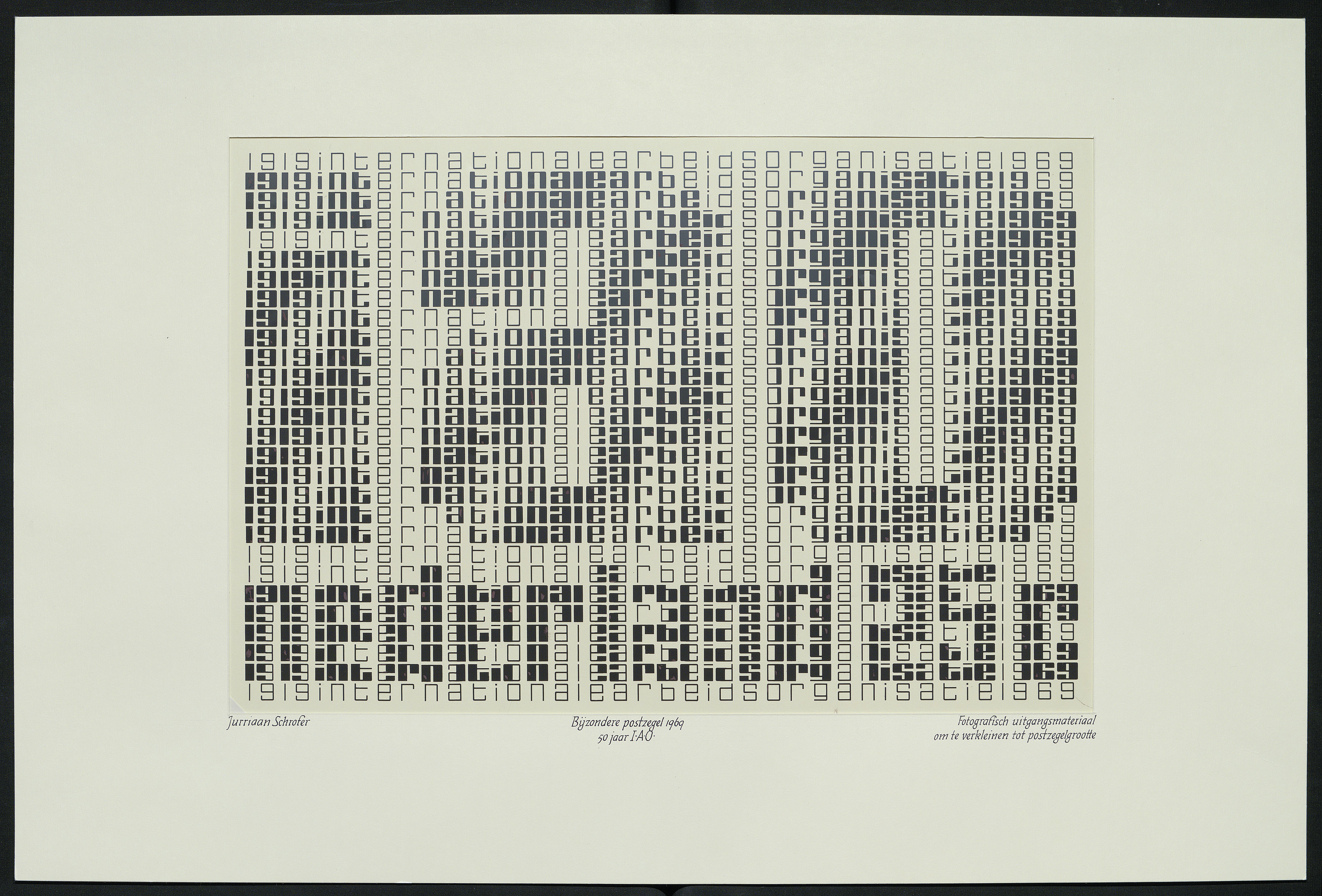
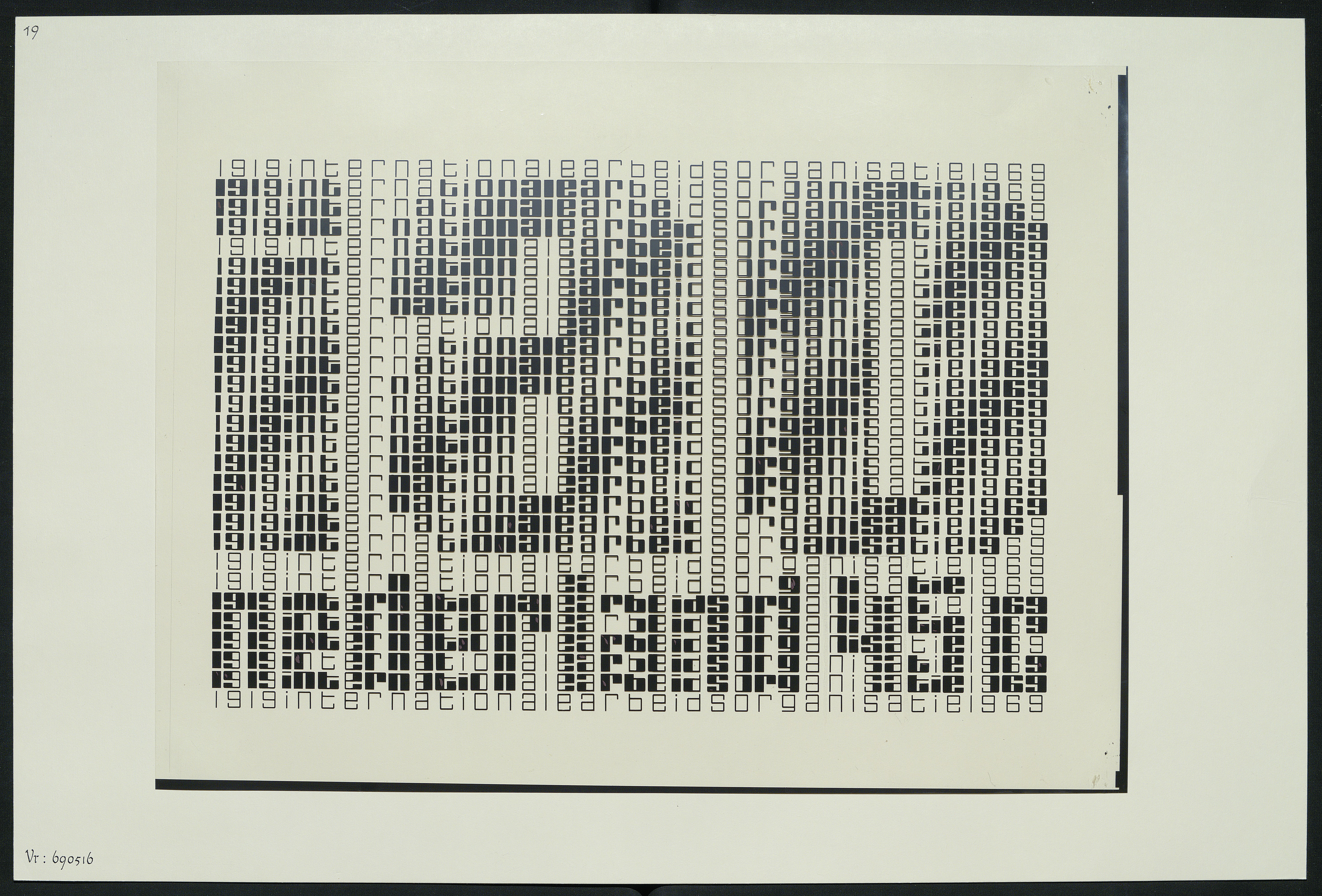
(Nationaal Archief Nederlands)
As I noted above, the weight adjustment mistakes with the T/ts appear on both stamps, which suggests they used the same mechanical. Now look again at the mechanical (the only one in the archives):

(Nationaal Archief Nederlands)
The transfer letters were rubbed down on loose mylar/acetate taped to a piece of graph paper for alignment. It makes sense that Schrofer would have reused the mechanical and swapped the 2/4 in the field by carefully cutting one out of the sheet and replacing it with the other. There are other examples of this kind of manual/material editing in his archives.
So, why doesn’t the mechanical show this? The clear sheet is completely intact, so he didn’t cut out one number and replace it with a piece of sheet with the other. He might have made the 45c version of the field first, had it photgraphed, then carefully scraped off the rubdown letters for the 4 and replaced them with ones for the 2. But there’s also no sign of the sheet being worked with the kind of tool it would take to do that.
I hope more time in Schrofer’s archives will yield an answer.
(All uncredited digital diagrams made with Python in DrawBot.)

(In: Frederike Huygen, Jurriaan Schrofer: Graphic designer, pioneer of photo books, art director, art manager, environmental artist)
Jurriaan Schrofer made these silkscreen prints in 1972; digging in his papers in the University of Amsterdam/Allard Pierson Museum’s Special Collections, I found some process materials.
It’s not an accident that the elements in the pattern are geometrically-simplified elements that can be combined to make glyphs in a Latin-alphabet script. Schrofer was already absorbed in constructed-script designs and incorporating combinatoric methods.
He imagined an array of 12 × 12 tiles, each tile comprising four elements: a 90º arc, or 90º linear angle, in a square, in 1 of 4 orientations (NW, NE, SE, SW). First, he had to work out all the possible permutations of the elements in a tile.
(Jurriaan Schrofer Archive, Allard Pierson, University of Amsterdam)
He wasn’t using a computer, so he had to work manually. There are twenty-four permutations of the four elements in a tile. He had to diagram each permutation and draw it. But: how to randomize the tiles for the print?
(Jurriaan Schrofer Archive, Allard Pierson, University of Amsterdam)
He drew six sets of twenty-four numbered square slips on graph paper, three sets each in two different colors, then drew them randomly (out of a hat? a bag? a box?; we don’t know) and pasted them on a template to make a plan.
(Jurriaan Schrofer Archive, Allard Pierson, University of Amsterdam)
He needed two color sets because he wanted to make prints using only one flavor of element—arc, or angle—and using both flavors. Then he had to cut rubylith sheets, and make the photo-ready prints. (I invite anyone better-versed than I am in this process to correct me!)
(Jurriaan Schrofer Archive, Allard Pierson, University of Amsterdam)
Arranging the tiles cut out of the prints according to his plans, he could then have photos taken, enlarged, and made into screens for his prints.
Using the information I got from these materials, I could reconstruct Schrofer’s process and prints with Python code in DrawBot:

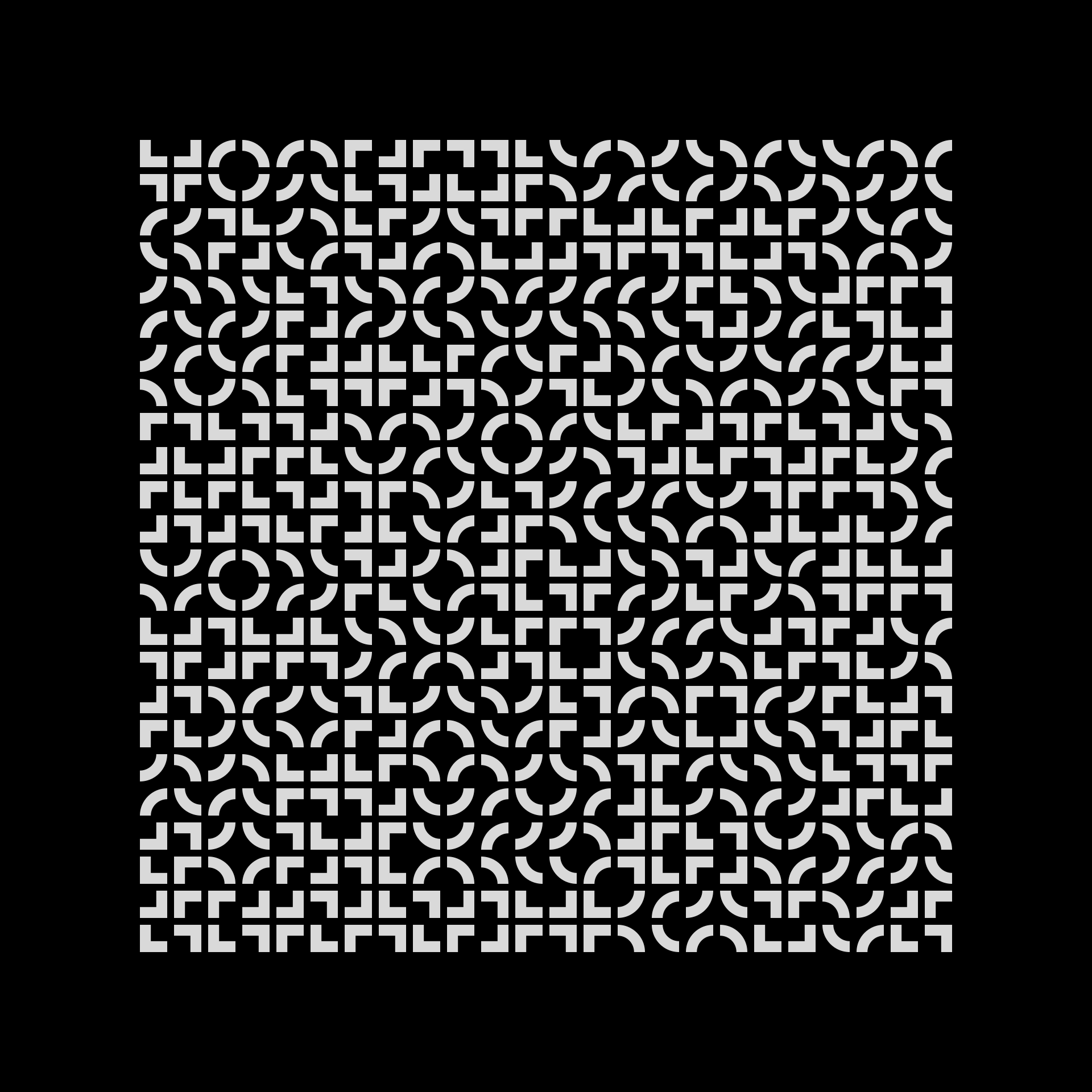
Reconstructed Girard panel (2018)

A student in my design methods course in spring 2018 carried around a beat-up SIGG water bottle decorated with this design (these are small images of the bottle I found on a Japanese retailer’s website):


I was convinced I could reconstruct the design with code, but first I wanted to figure out where it came from. I used the very obvious Herman Miller logo as my first clue and worked from there; I tell the whole story in this Twitter thread. Long story short: the design is Alexander Girard’s, from the ‘Circle Section A’ environmental panel he made for Robert Propst’s Action Office—the first modular, reconfigurable office design system. (The photo below showing Girard at work with the panel in the background to his left was taken by Charles Eames, dated 1972 and reproduced in Architect’s online story on the 2017 Designer's Universe exhibit of Girard’s work at Cranbrook.)
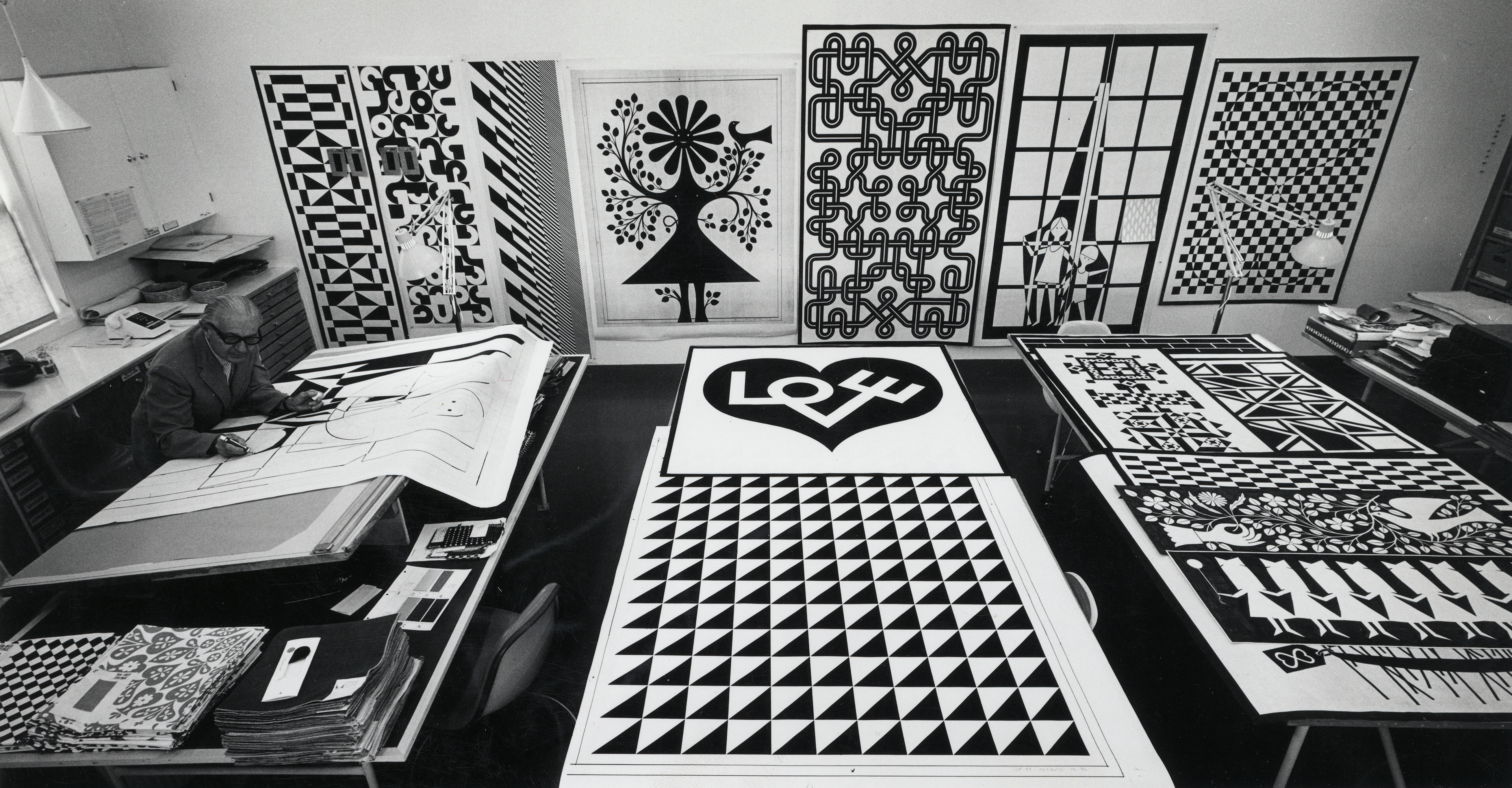
Girard’s design is an example of Wang tiling—a method of filling surfaces using tiles that can only fit together in certain orentations. Simply tiling a random set of the possible shapes in the system of combined curves and straight strokes, alternating between using the print color as positive and negative space like Girard did, creates small barb-like shapes that aren’t present in his design:

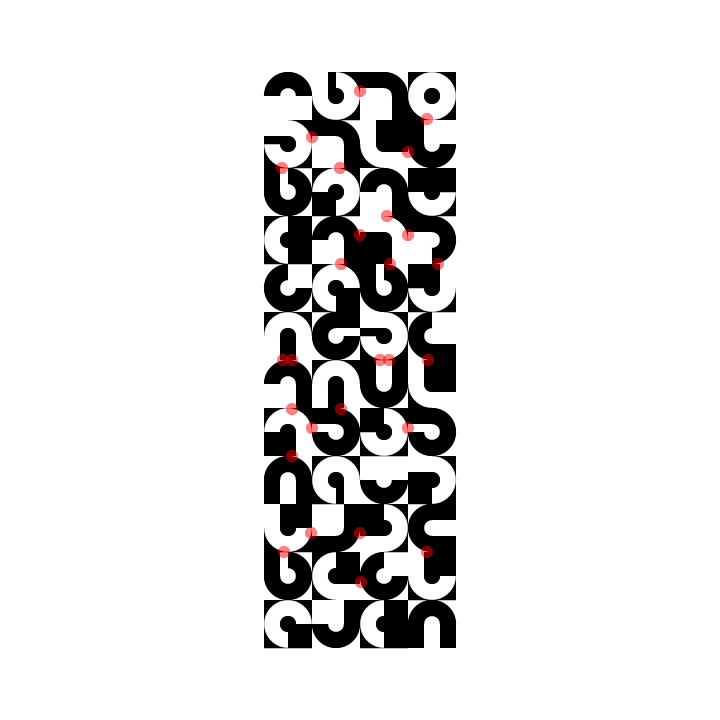
So I had to test all combinations of all the tiles pairwise and horizontally/vertically, to figure out which tiles could touch which tiles in which orientations without creating those shapes, and then include those exceptions in the procedure for placing tiles as a series of tests of each random choice.

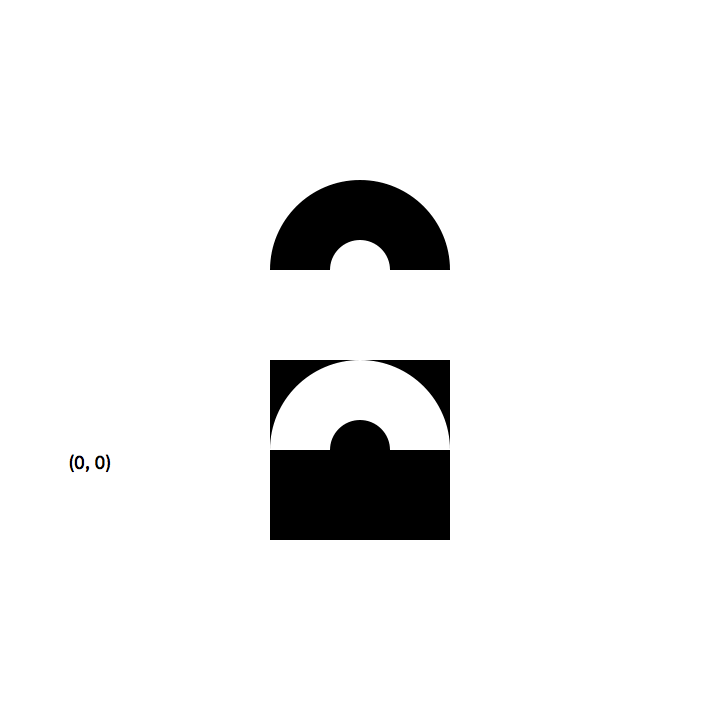
The code I wrote can generate valid fields of arbitrary dimensions.
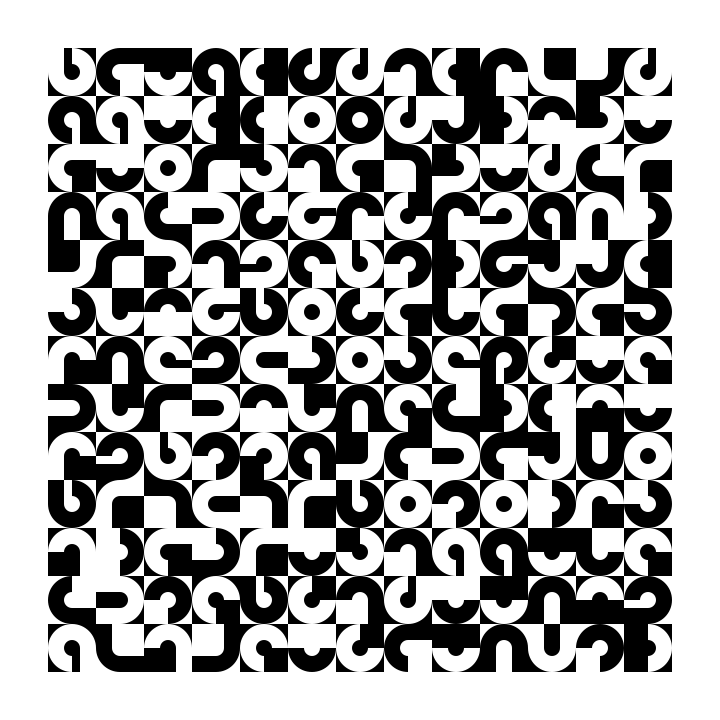
Static images and animations made in Python using DrawBot.
